I finished another flamenco blanca guitar recently. It’s the fourth of this design and my fifth guitar.
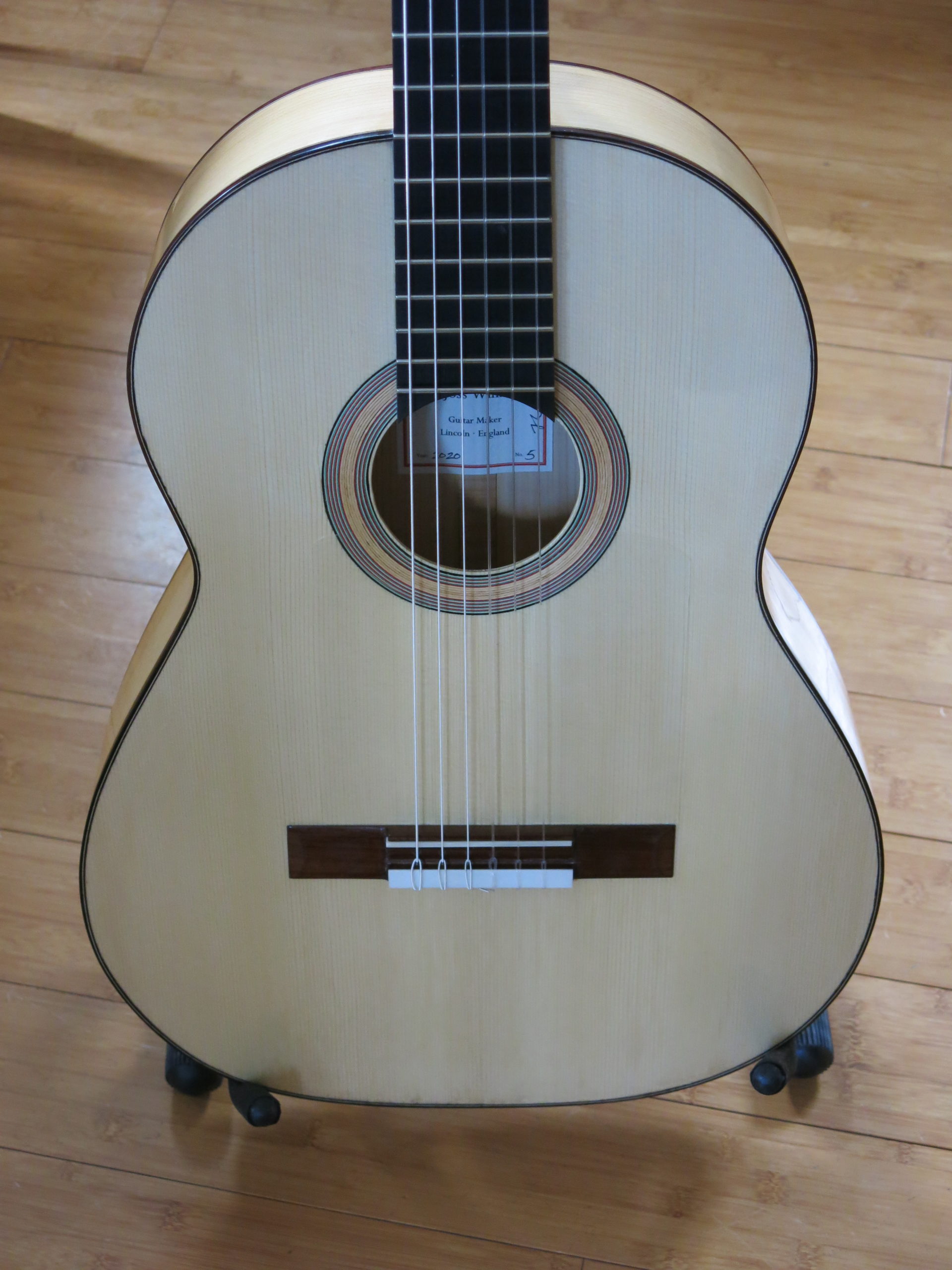
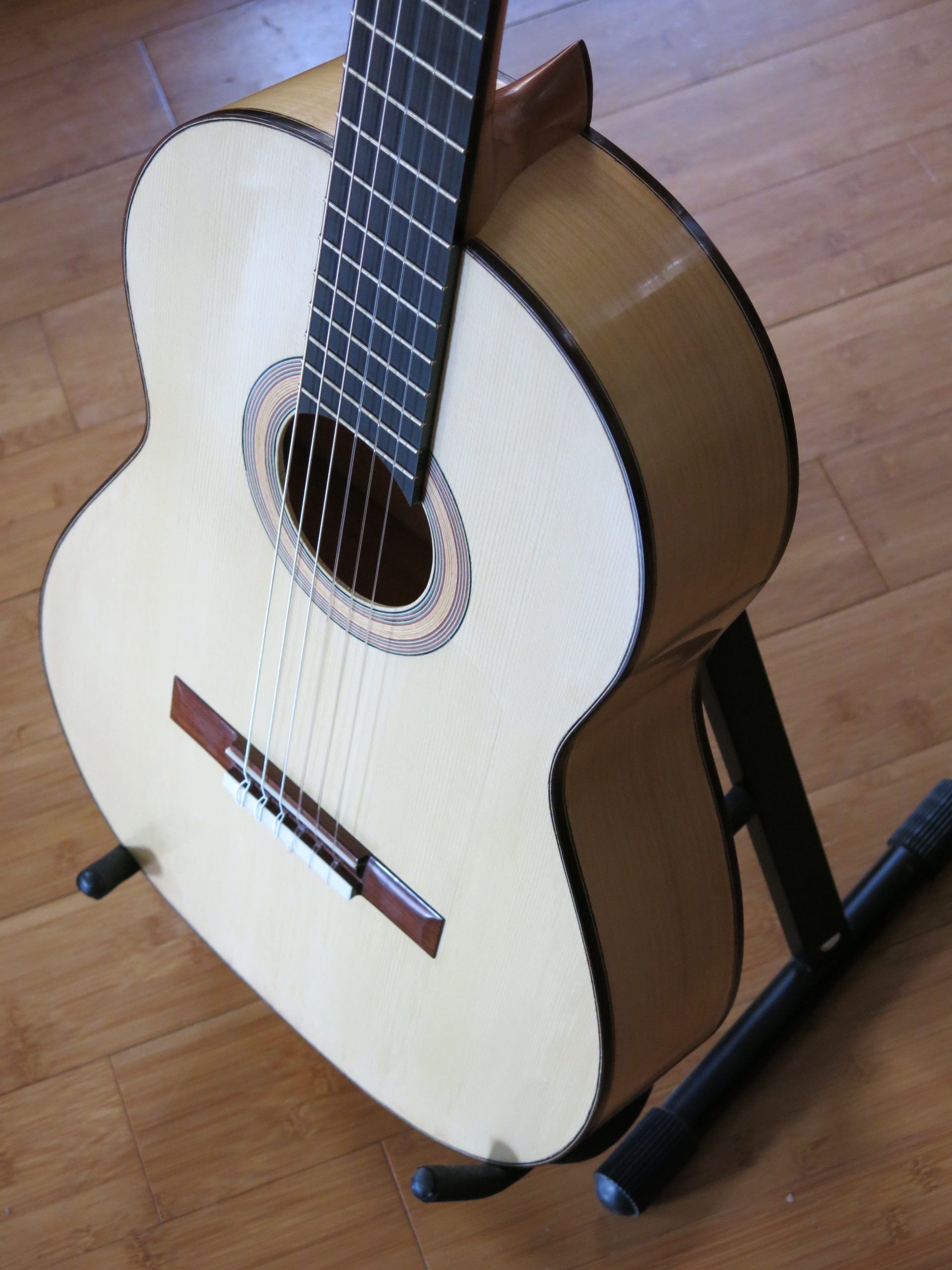
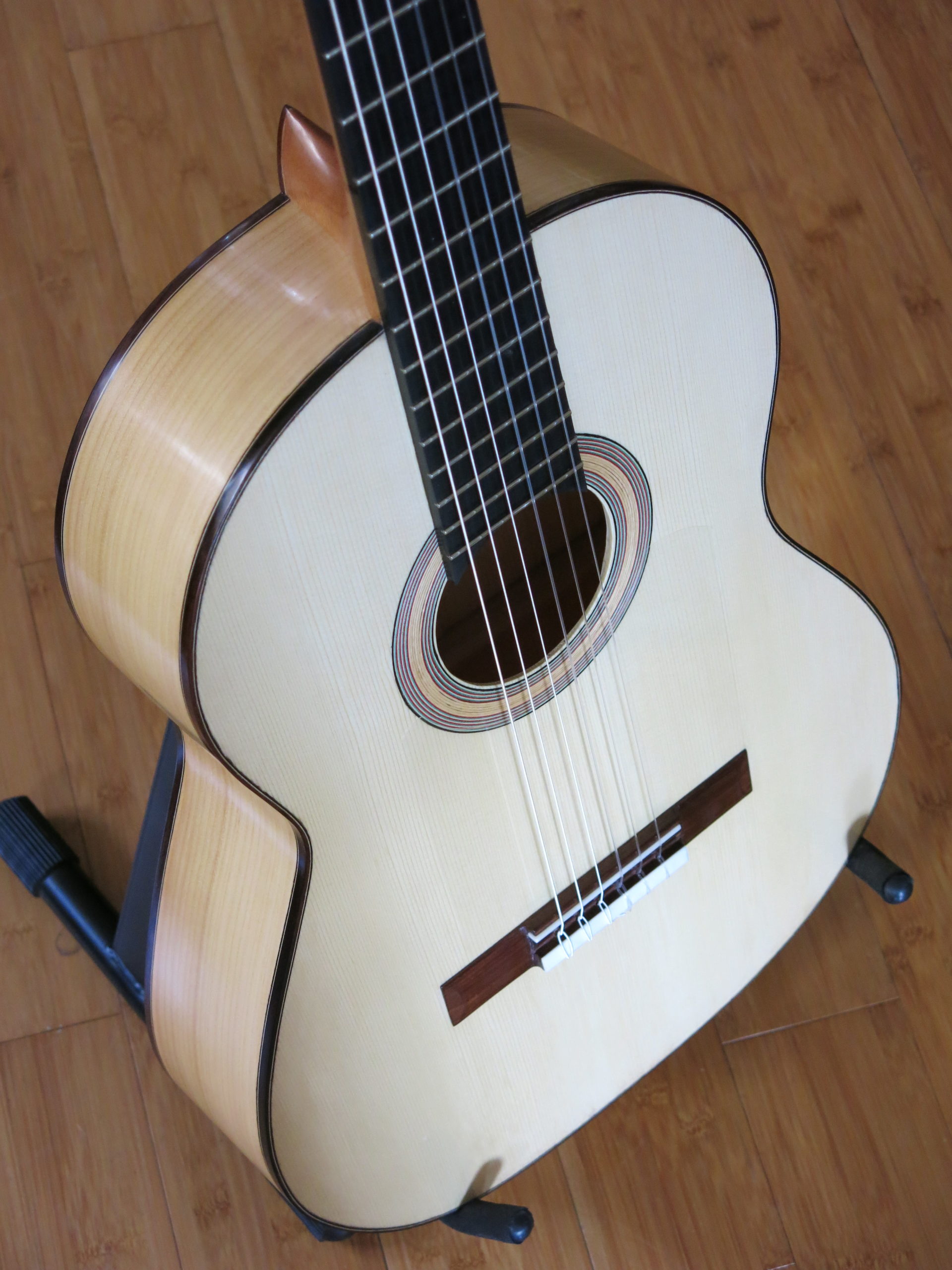

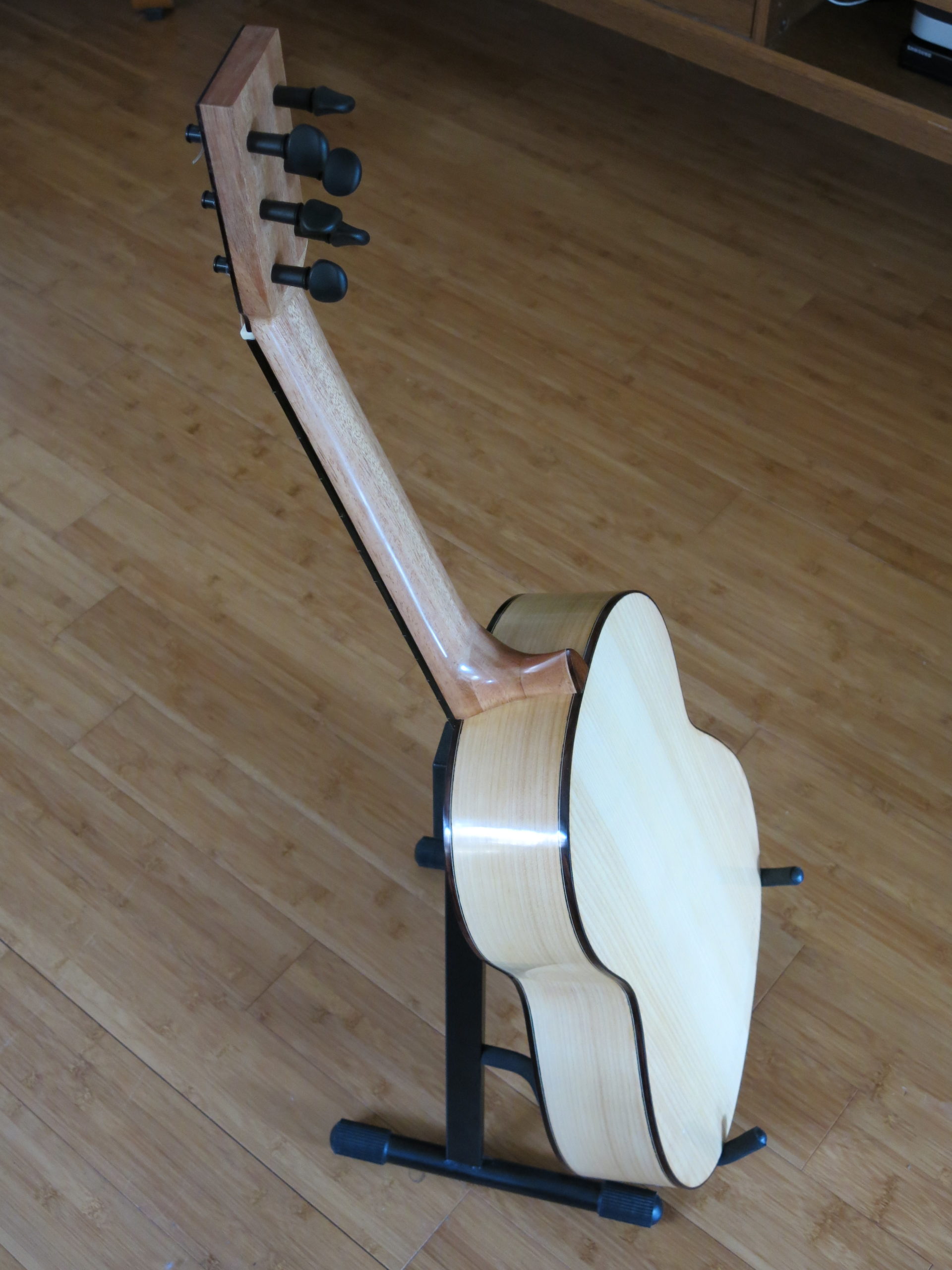
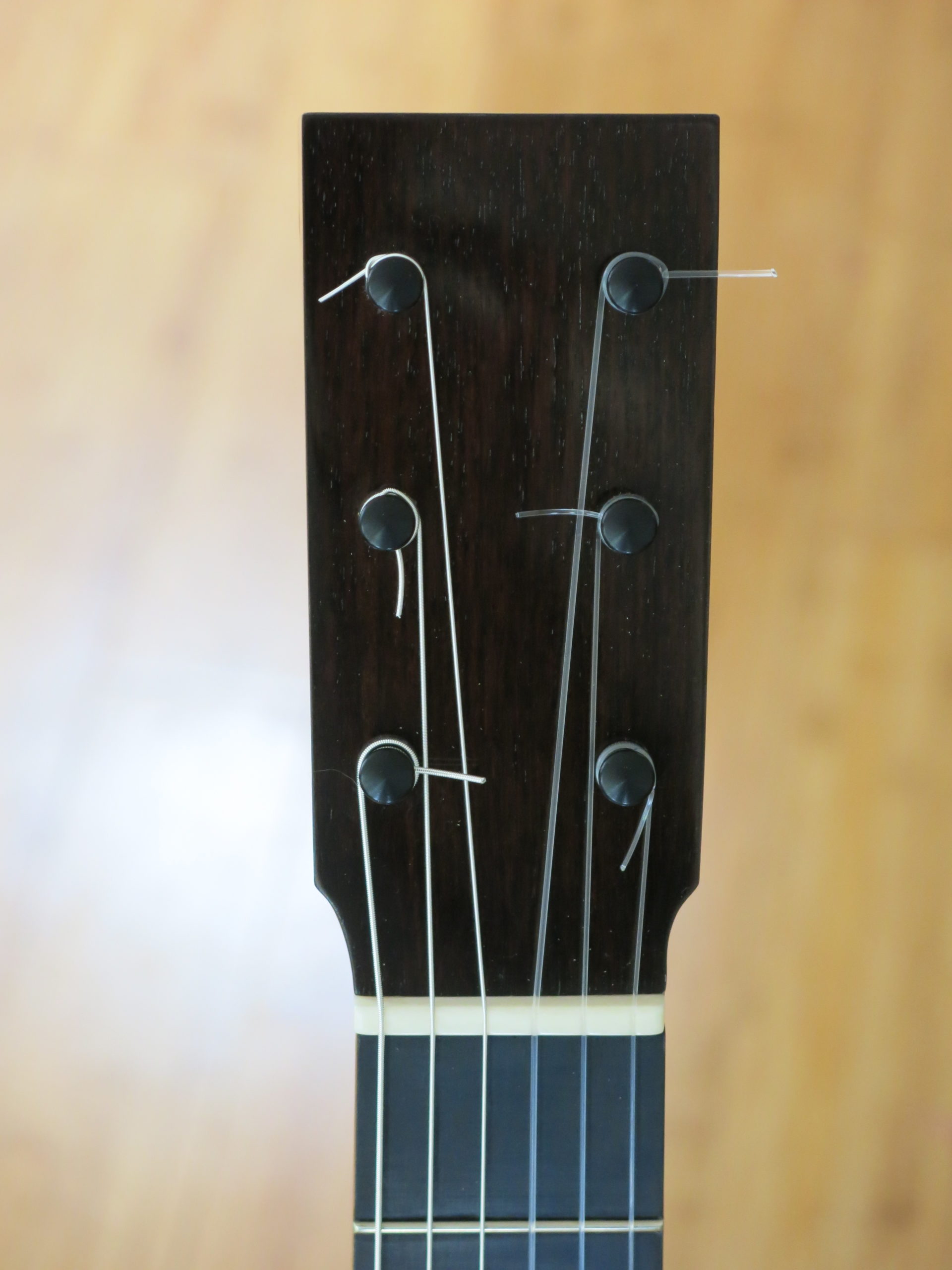

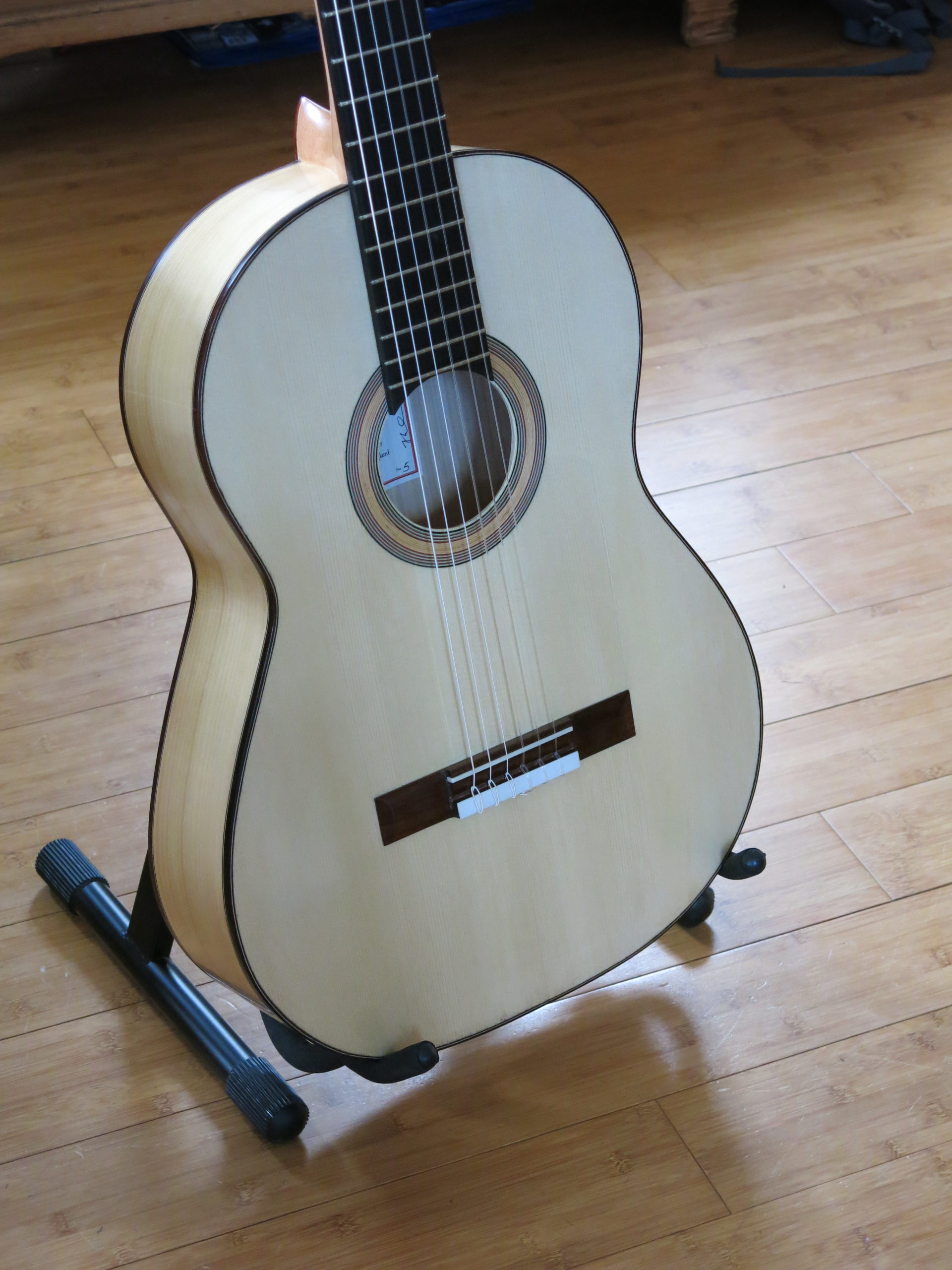
Like the previous three instruments, it’s based on a Marcelo Barbero plan, has a Spruce soundboard and Cypress back and sides. It differs from the previous three by having an African Mahogany neck and Ebony fretboard. The particular piece of Mahogany was relatively lightweight, comparable to a dense version of Spanish Cedar, which I’ve used on other necks, such that I could hardly tell the difference. It was the first time I’ve used Ebony, too, having previously used Rocklite. The Ebony was kindly given to me by the luthier and author, Robert Welford, when I interviewed him for my research.
Shortly after I started working on this guitar in January, I bought Sheldon Urlik’s book, A Collection of Fine Spanish Guitars, which is a superb resource for luthiers because, in addition to photographs and descriptive text, it contains the measurements for each instrument; not only the exterior dimensions, but thicknesses at 14 points across the soundboard (including the strutting design), 9 points across the back (including the bracing pattern), and the thickness of the ribs (both bass and treble). If that wasn’t enough, the dimensions of each instrument’s bridge is also given as well as the wood species for each component. Highly regarded luthiers, Richard Bruné, Jeffrey R. Elliott and Cynthia Burton examined and documented the guitars.
There are 21 flamenco guitars in the book (and an accompanying CD of Richard Bruné playing them), so that’s a lot of useful data to learn from and music to enjoy. I put a summary of it into a spreadsheet for easy reference and also to see what the average measurements were across 19 of the guitars. I excluded a negra by Fernandez and also a blanca by Fleta, which was an outlier in terms of its weight and the assessment of it states that it sounds like a classical guitar, rather than flamenco.
The average weight of the 19 guitars, dated between 1883-1988, is 1172g. 14 of the guitars have wooden pegs and those average 1165g. Guitars made in or before 1948, when nylon strings replaced gut, average 1110g. Guitars after 1948, average 1256g. Scale lengths range from 646-660, with most between 650-655. Average thicknesses are:
- Soundboard around bridge: 1.82mm
- Bass side: 1.43mm
- Treble side: 1.47mm
- Back 1.95mm
- Bridge height: 7.82mm (this is an indication of saddle height (+0.5-1mm), which gives a flamenco guitar its characteristic feel)
Although I’m not advocating designing a guitar simply by numbers, they do consistently illustrate the build characteristics of a traditional flamenco guitar.
When I built my first flamenco blanca, I was guided by scale drawings and also the observations by Gore and Gilet, which I summarised as:
Based on their analysis of six vintage instruments, Gore and Gilet suggest that a good traditional sounding flamenco guitar will have an air resonance below 100Hz and a top resonance of around 180Hz (between F and F#) or around 190Hz (between F# and G). They suggest a bridge of no more than 15g, back and sides that are no thicker than 2mm and an overall weight of around 1100g.
Building a full-size guitar that weights around 1100g narrows down the choices of tonewood and build decisions, such that you almost inevitably end up with a flamenco blanca with wooden pegs. For my fifth guitar, I thicknessed the soundboard to around 1.8mm, the sides to 1.5mm and the back to 1.9mm. The neck, strutting, bracing and end block followed the Barbero plan (a 1948 Barbero guitar in the book weighs 1185g, 134g lighter than my #5). The density of the tonewood I used is:
- Mahogany neck: 514kg/m3 (640)
- Ebony fretboard: 1258kg/m3 (955)
- Indian rosewood bridge: 848kg/m3 (830)
- Cypress back: 646kg/m3 (535)
- Cypress sides: 642kg/m3 (535)
- Euro spruce top: 446kg/m3 (405)
The density of a species of wood varies from tree to tree, but if I compare these numbers to the Wood Database (given above in brackets), the neck is relatively light and the back and sides are relatively dense. The fretboard is relatively heavy with the finished fretboard before gluing weighing 60g more than the equivalent Rocklite. Clearly the way to reduce the weight of my guitar to that of Barbero’s (1185g), is to select lighter examples of wood and to use wooden pegs. For comparison, guitar #3, built to the same design, has a relatively light Spanish Cedar neck (448kg/m3), Rocklite fretboard (801kg/m3), Ebony pegs and weighs 1189g.
My latest instrument came together in a relatively straightforward way. I roughly shaped the bridge in January; prepared the neck and joined the head in February, and did everything else over 16 days in April when I had some annual leave. A further week of French polishing in the evenings, a week of waiting, and then a day to fit the pegs and set up the guitar.
It weights 1319g. The neck and fretboard woods added a bit more weight (about +100g) and the geared pegs weigh 34g more than Ebony pegs, so taking that into account it’s very consistent with number 3 (1189g), which has a Rocklite fretboard and Ebony pegs. The body resonance is E +47 cents (84.7Hz), compared to F# -42 cents (90.3Hz) of #3. The lower resonance is probably because the soundboard is thinner on #5.1
I expect more experienced luthiers will look at all this fuss over weight and think that I’m overlooking the importance of a subjective assessment of the materials and an intuitive approach to the build. I agree, but having made only 5 guitars (each about six months apart), it takes more repeated practice to develop that tacit knowledge. It is happening though, as I noticed the difference in the soundboard flexibility for this guitar, the crystalline character of the Cypress, which David Dyke had marked ‘OLD’, and carving the neck with a knife was easier and quicker this time.
Looking back over my workshop notebook, I wrote that, “I still refer to Roy’s book but more for process-related guidance, rather than what I should do. When not what.” I blame my tools a lot, or rather my use of my tools: the circle cutter blade is “crap”; the tape I use to clamp the binding kept peeling away and I resolved to find a better method, and the method of how I constructed the rosette was probably no more effective than how I had done it previously. When things go well, I note that it’s usually because “I took my time”; it’s not that I need to slow down, but that I am learning how best to use my time.
The next guitar will be of the same design but using Cedar of Lebanon back and sides, Western Red Cedar soundboard, Bog Oak fretboard, Lime neck and Walnut bridge. It’ll be interesting to see how it sounds using mostly local wood.
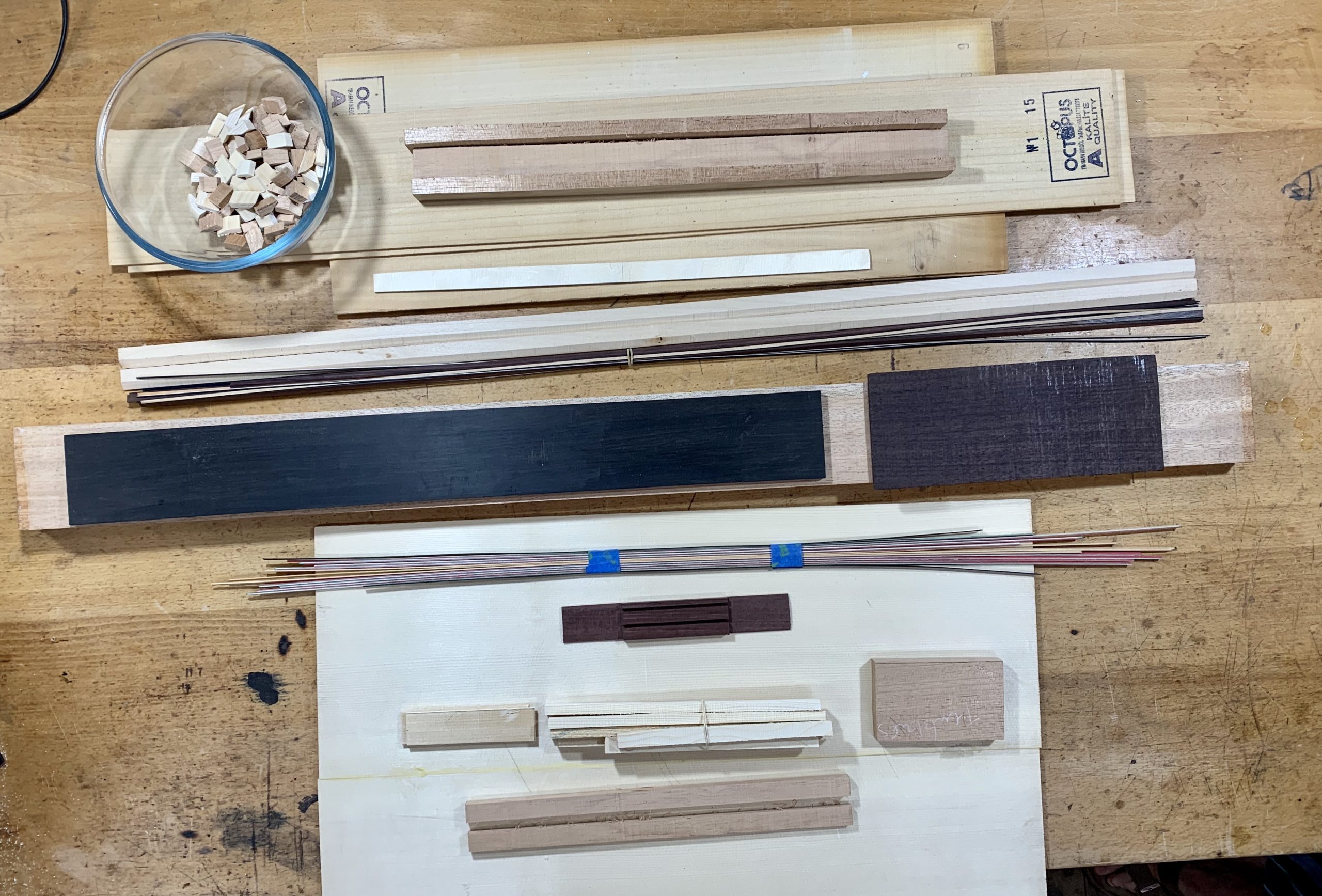


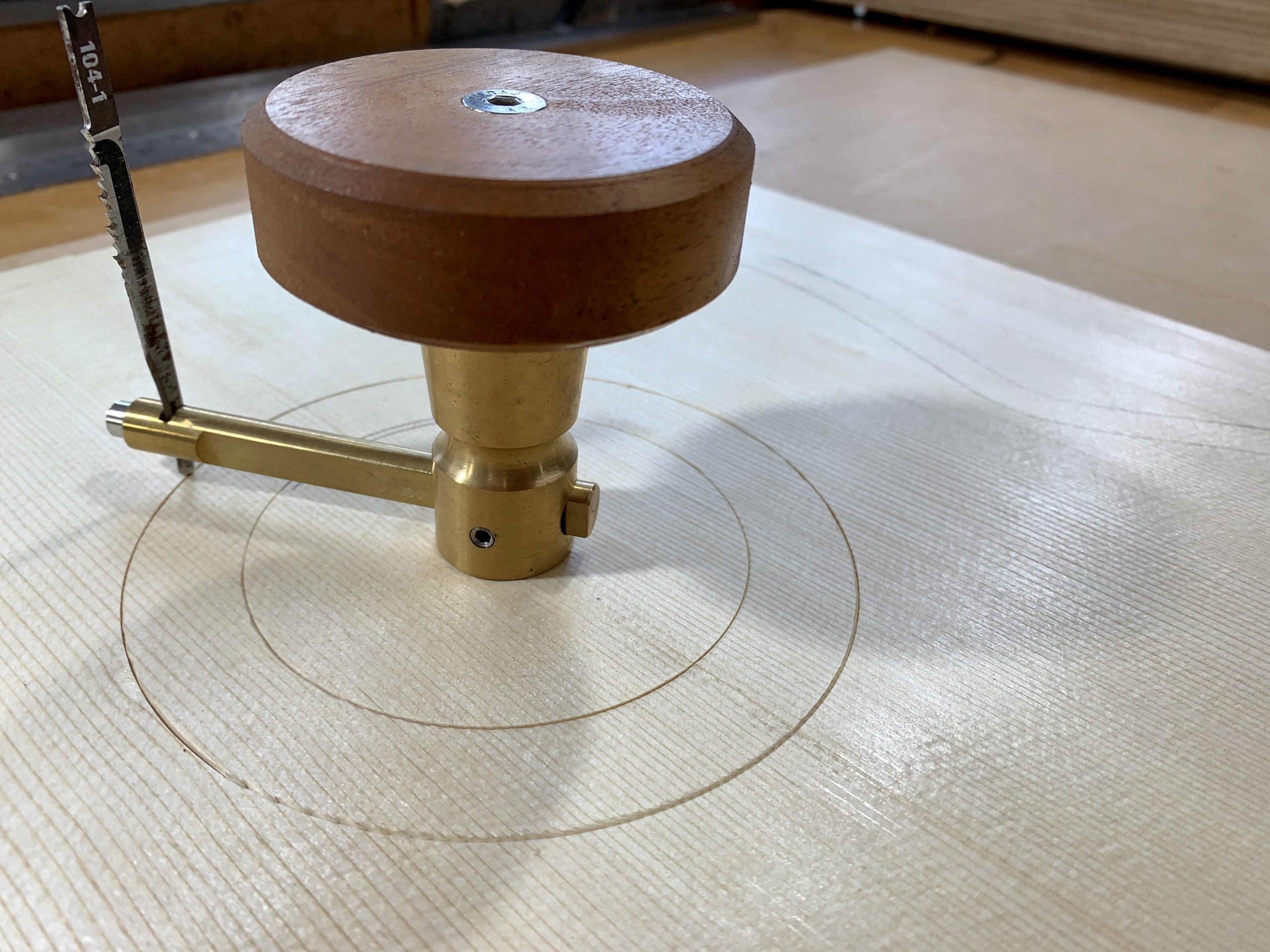
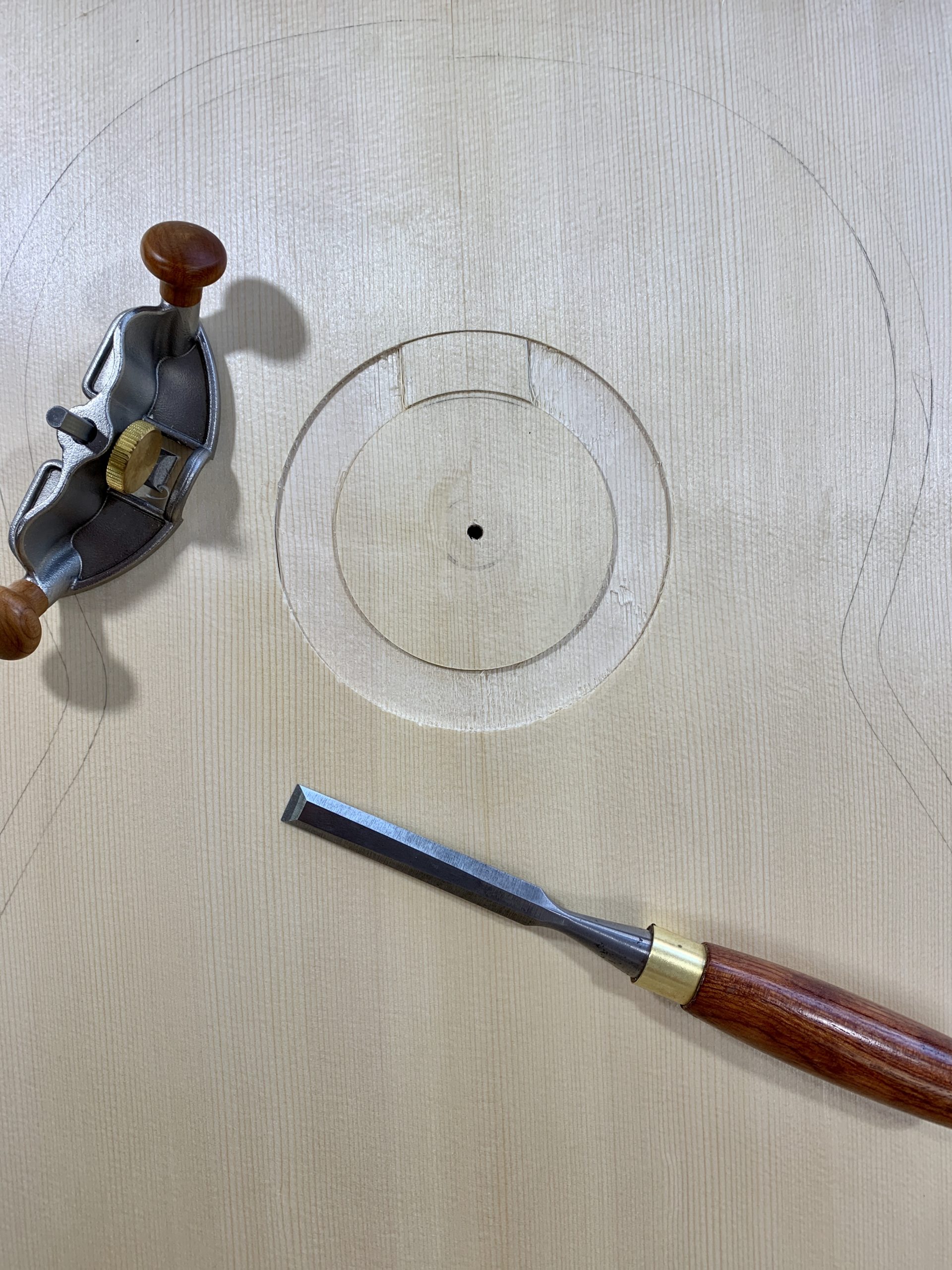

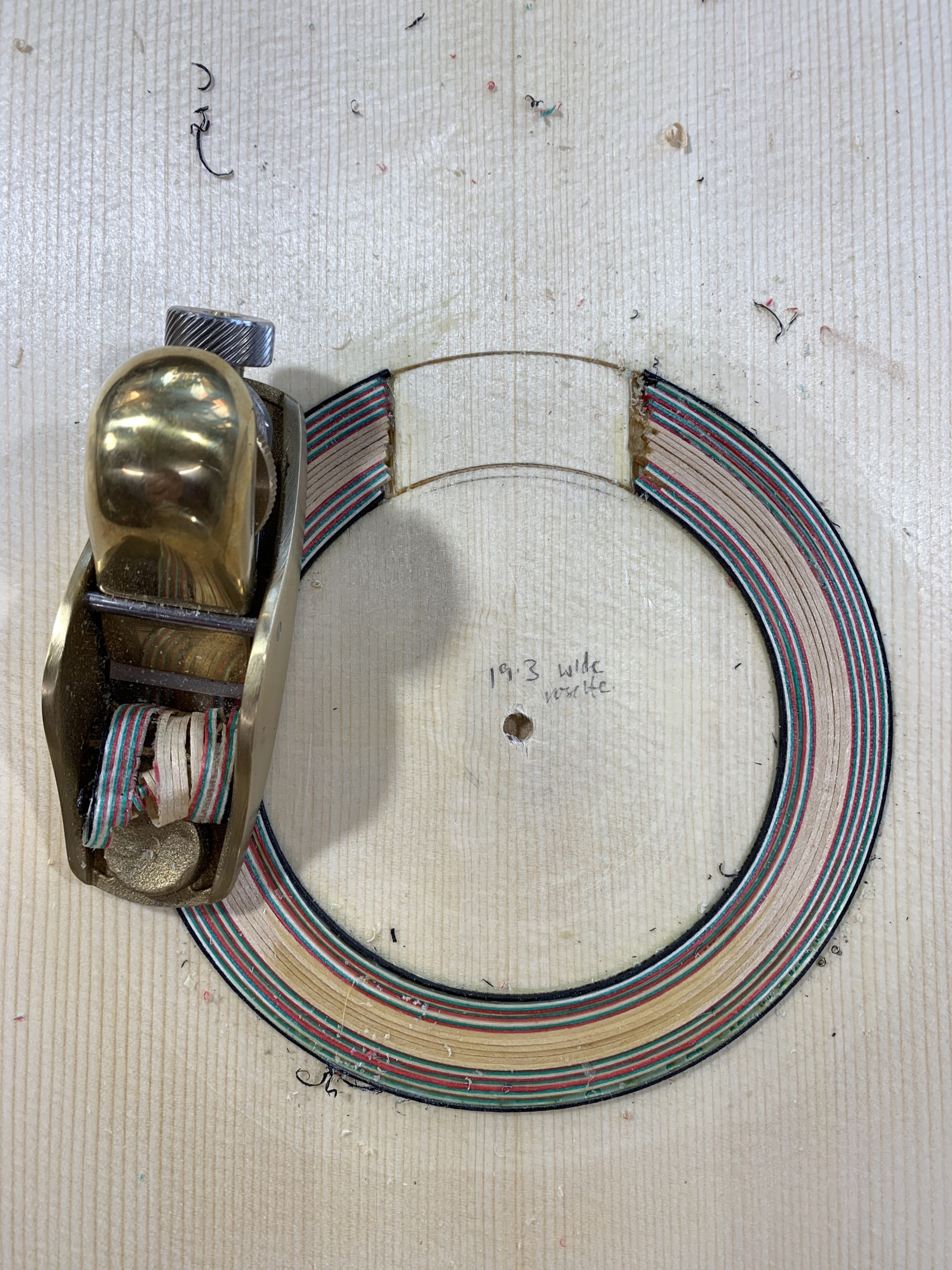
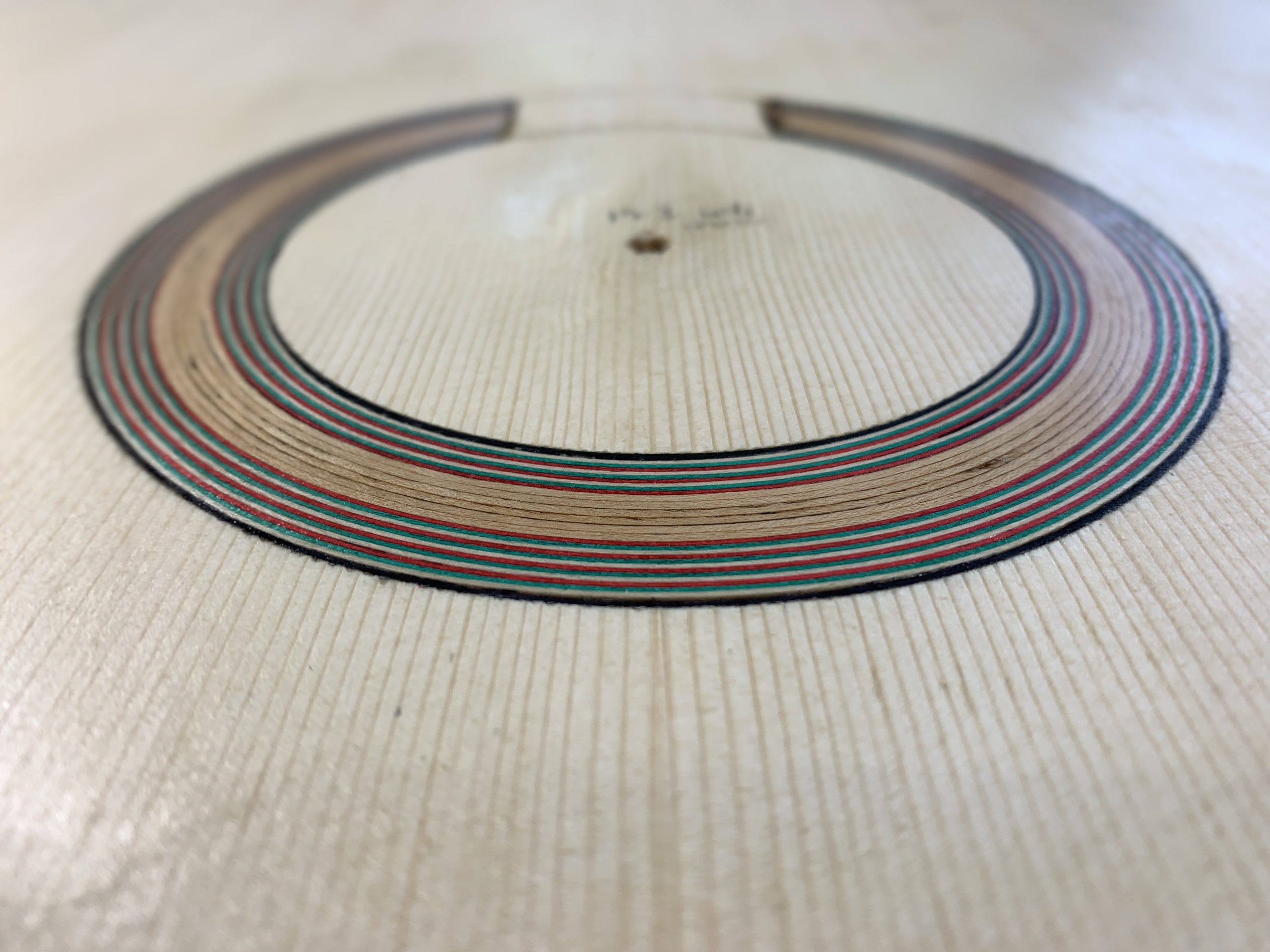
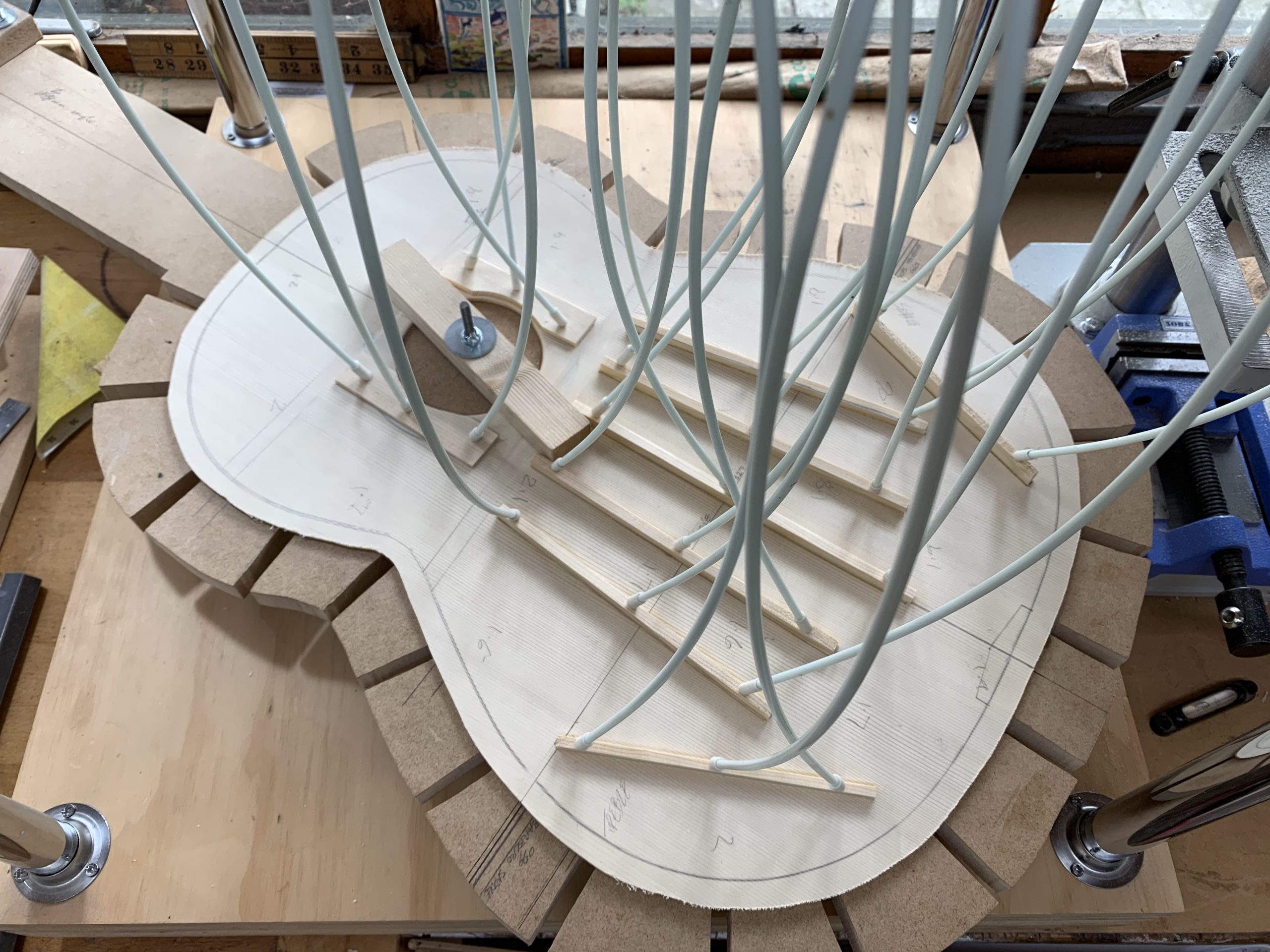
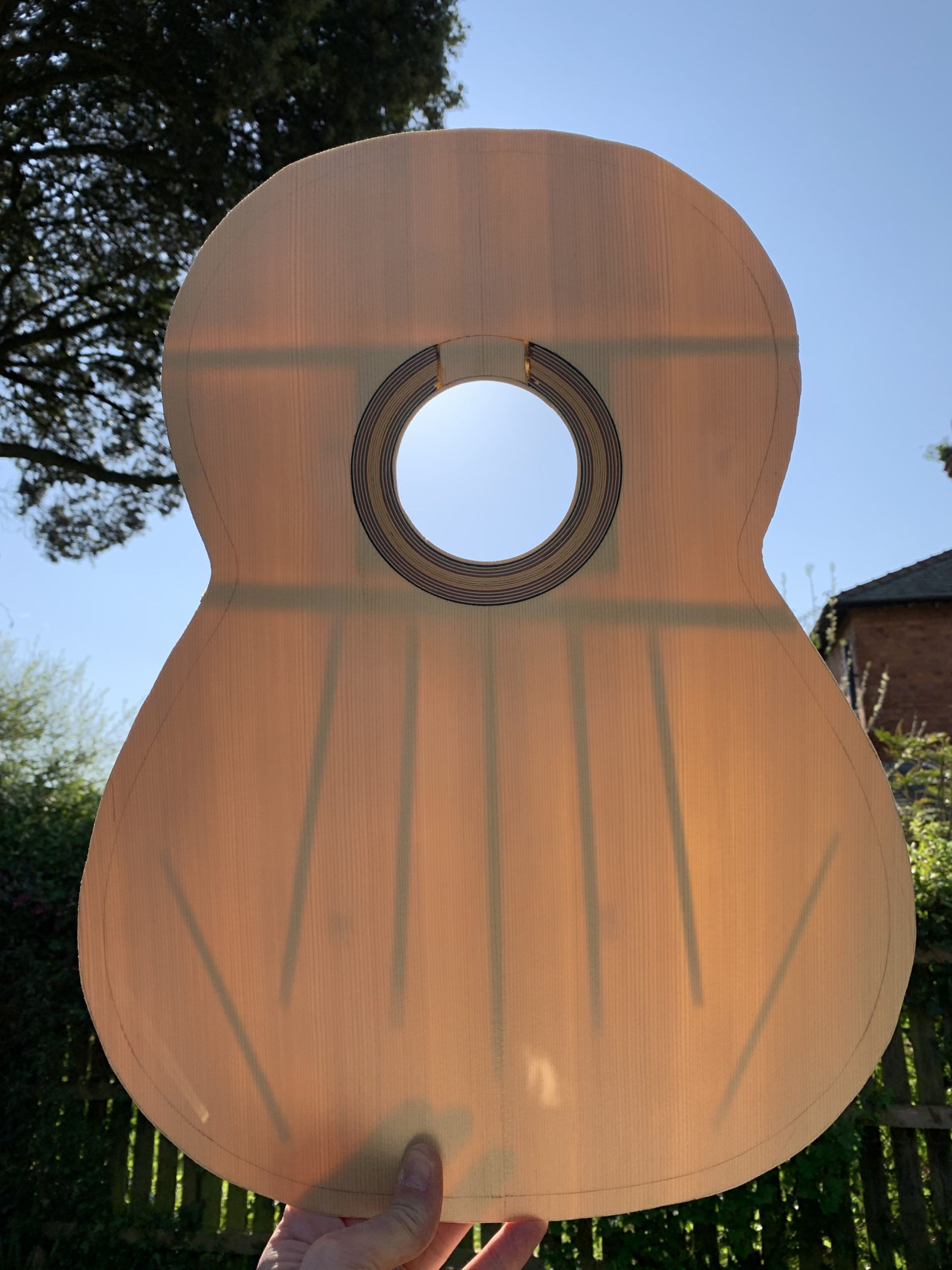

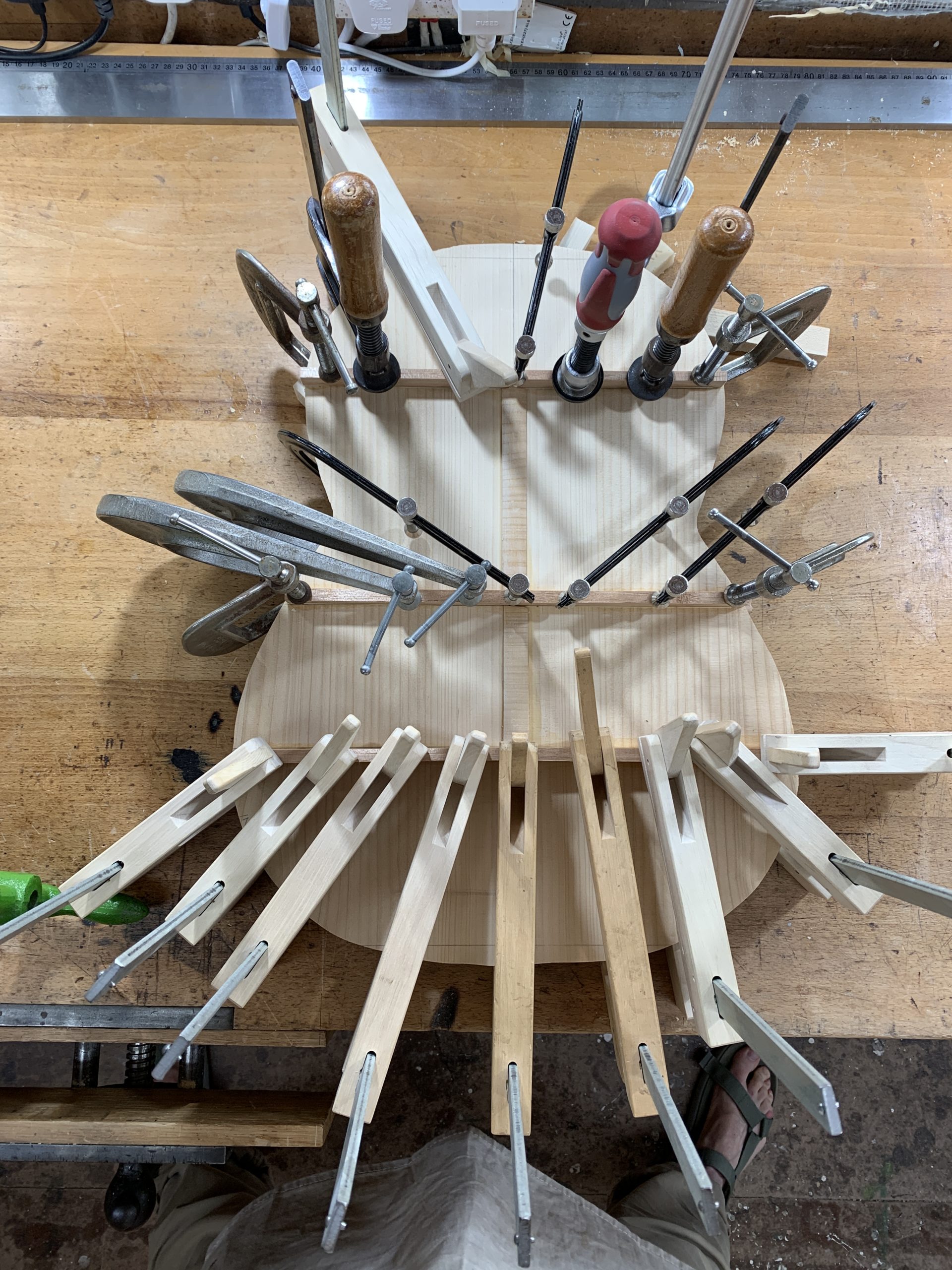

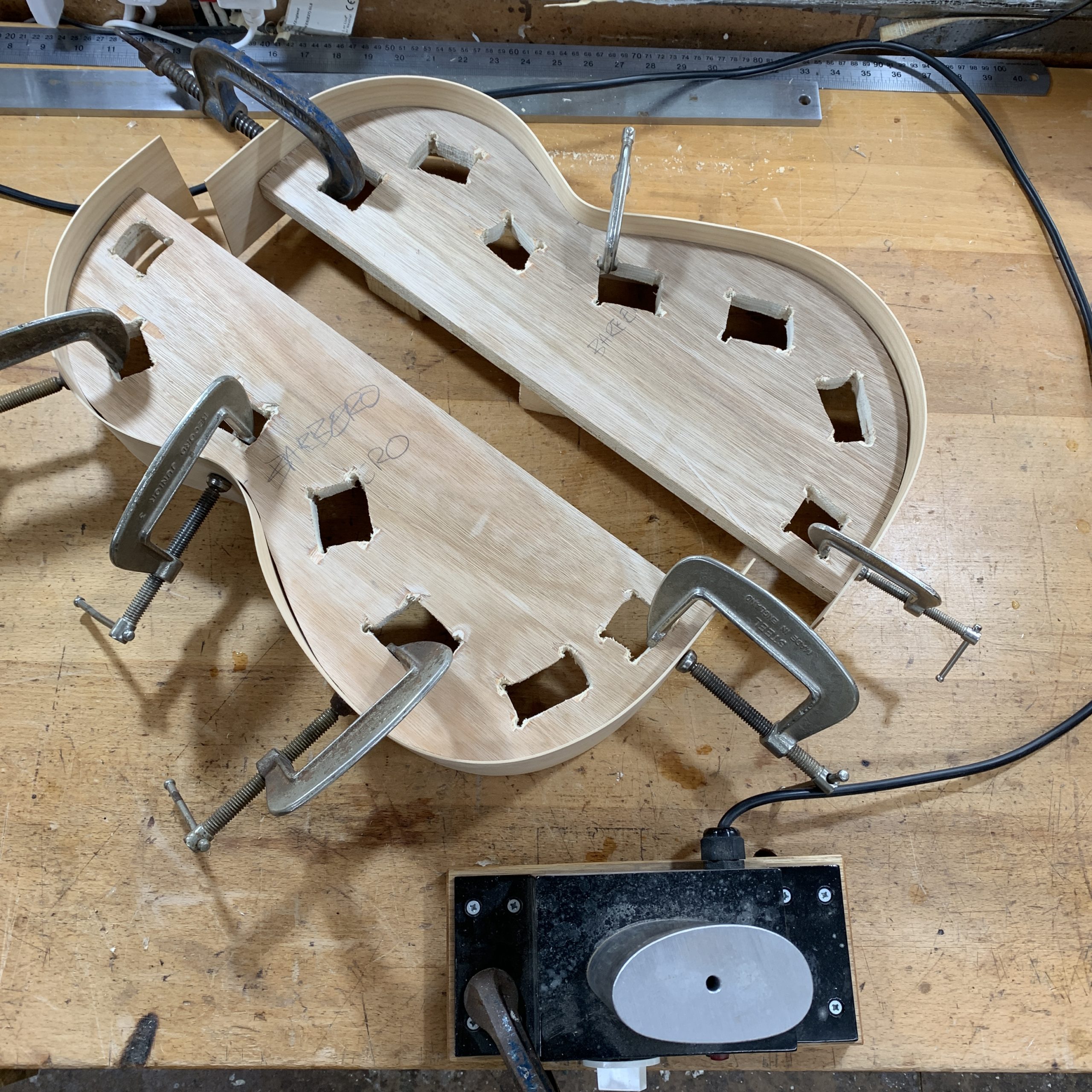
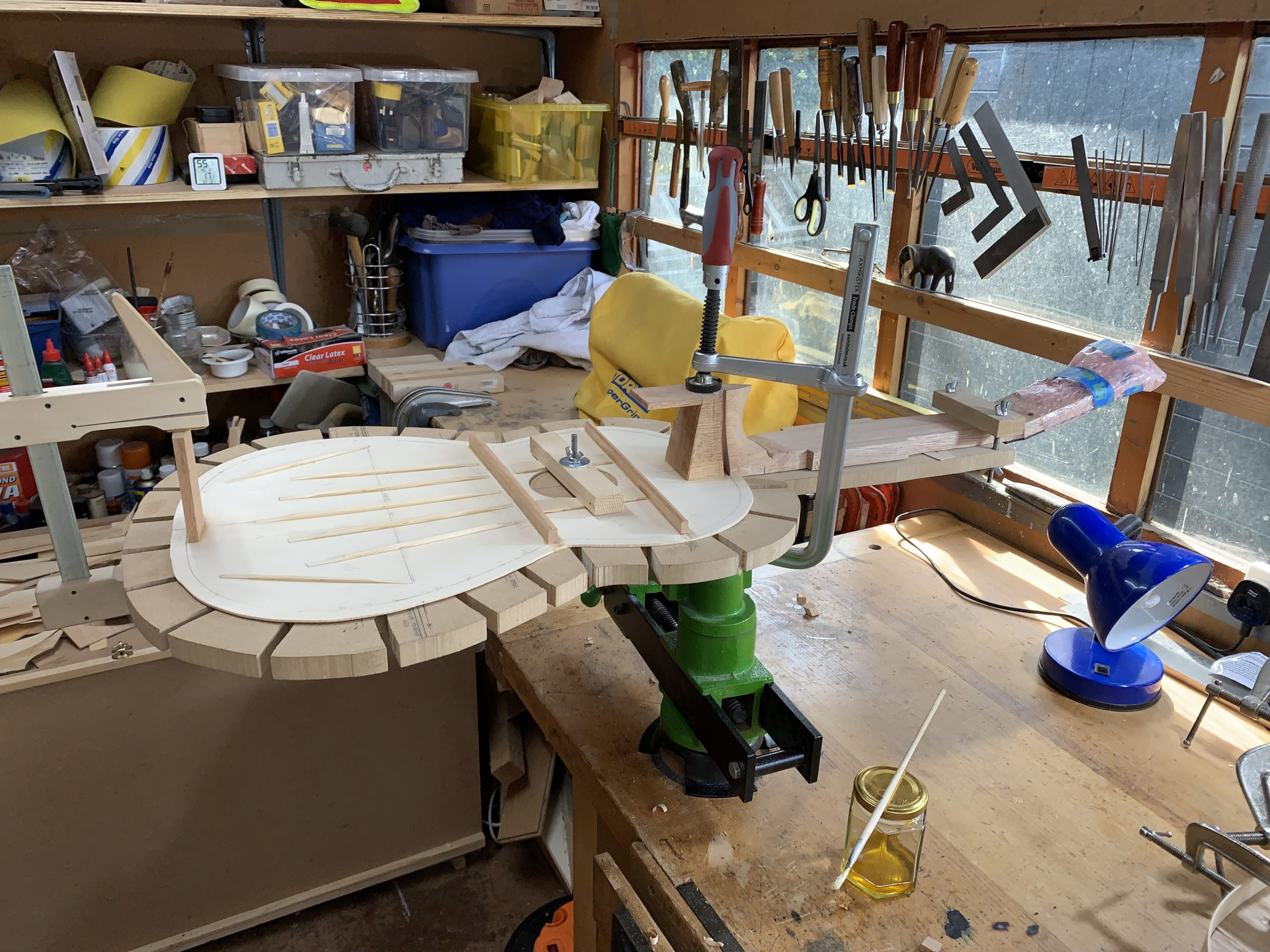
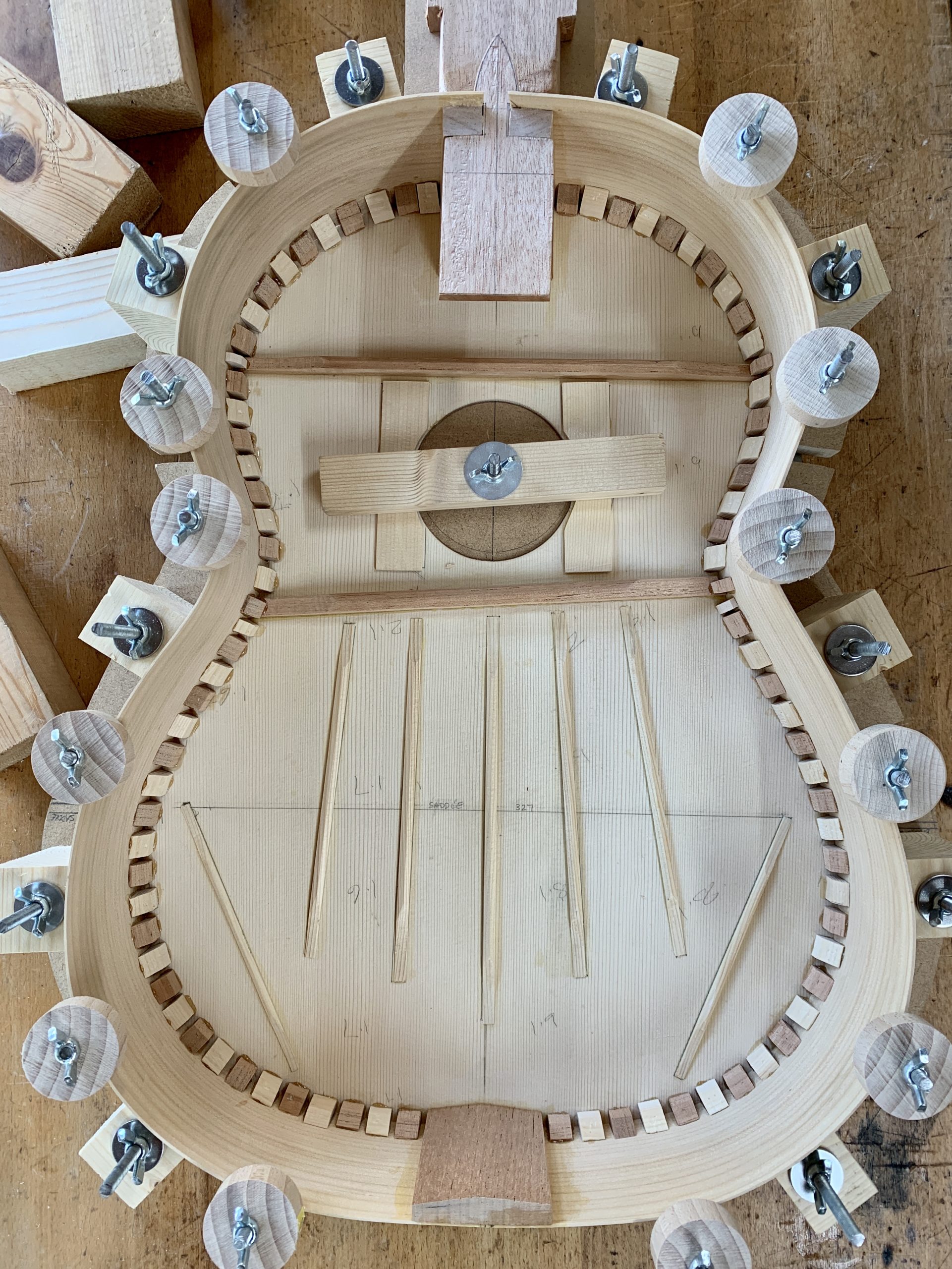

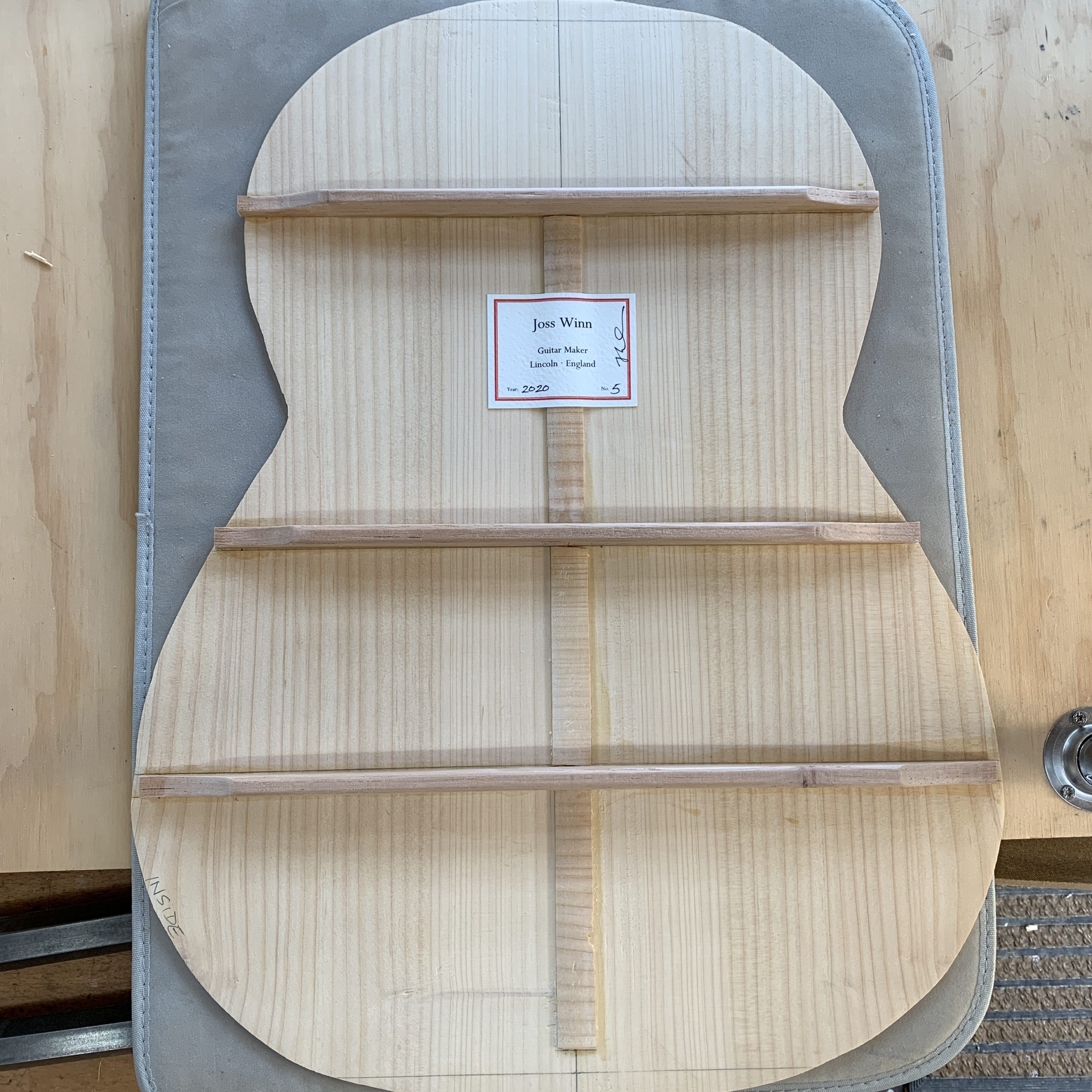
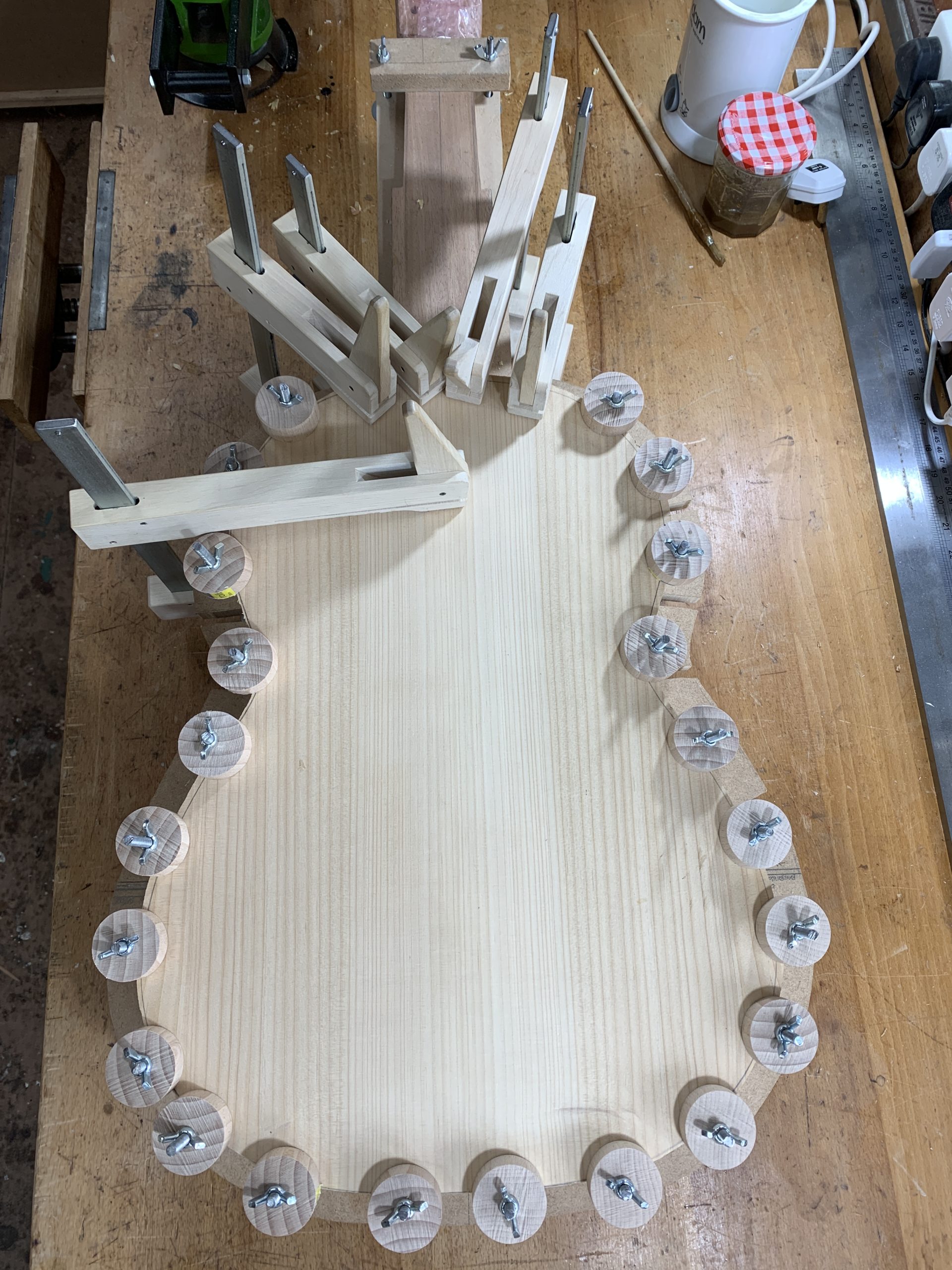
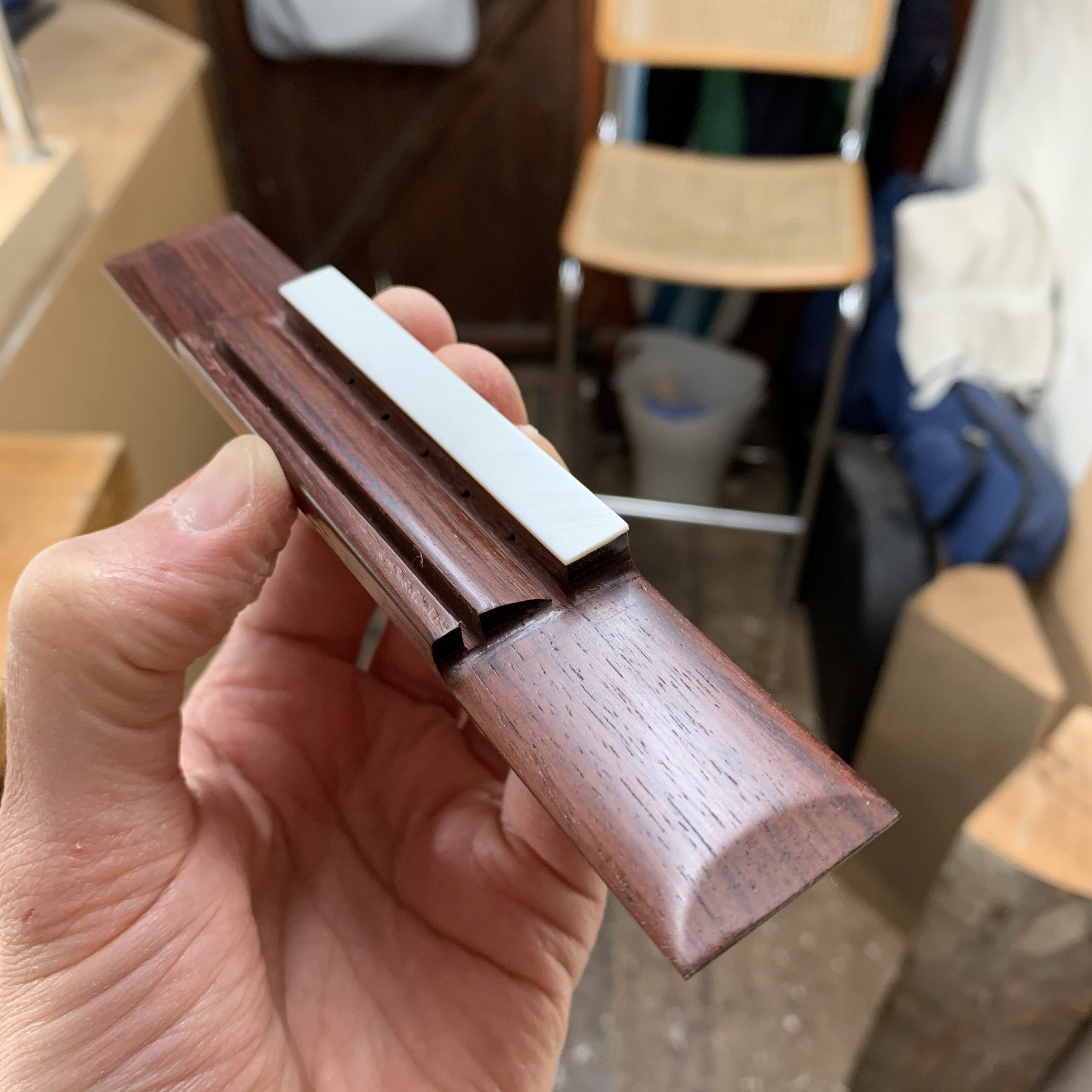
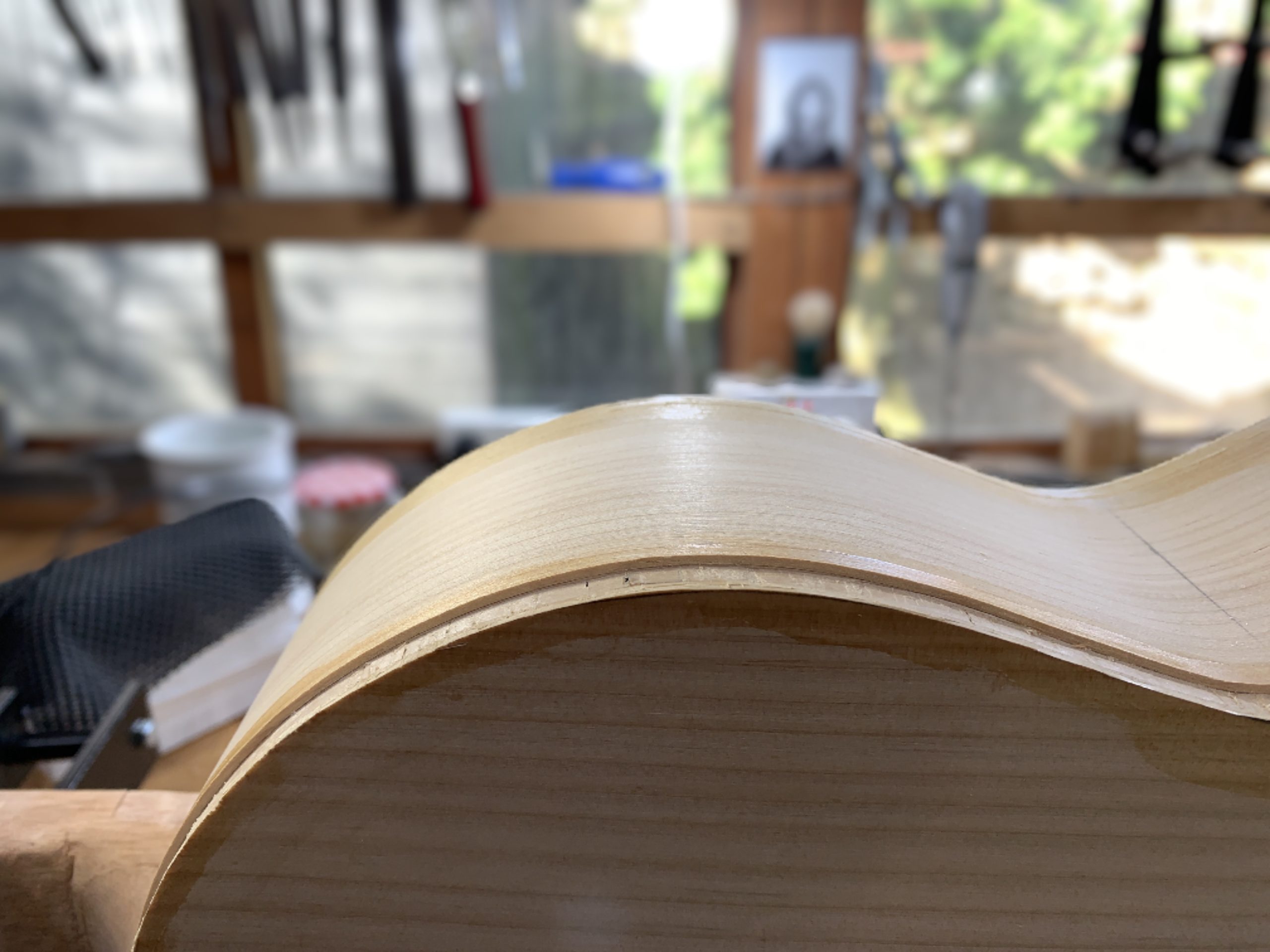

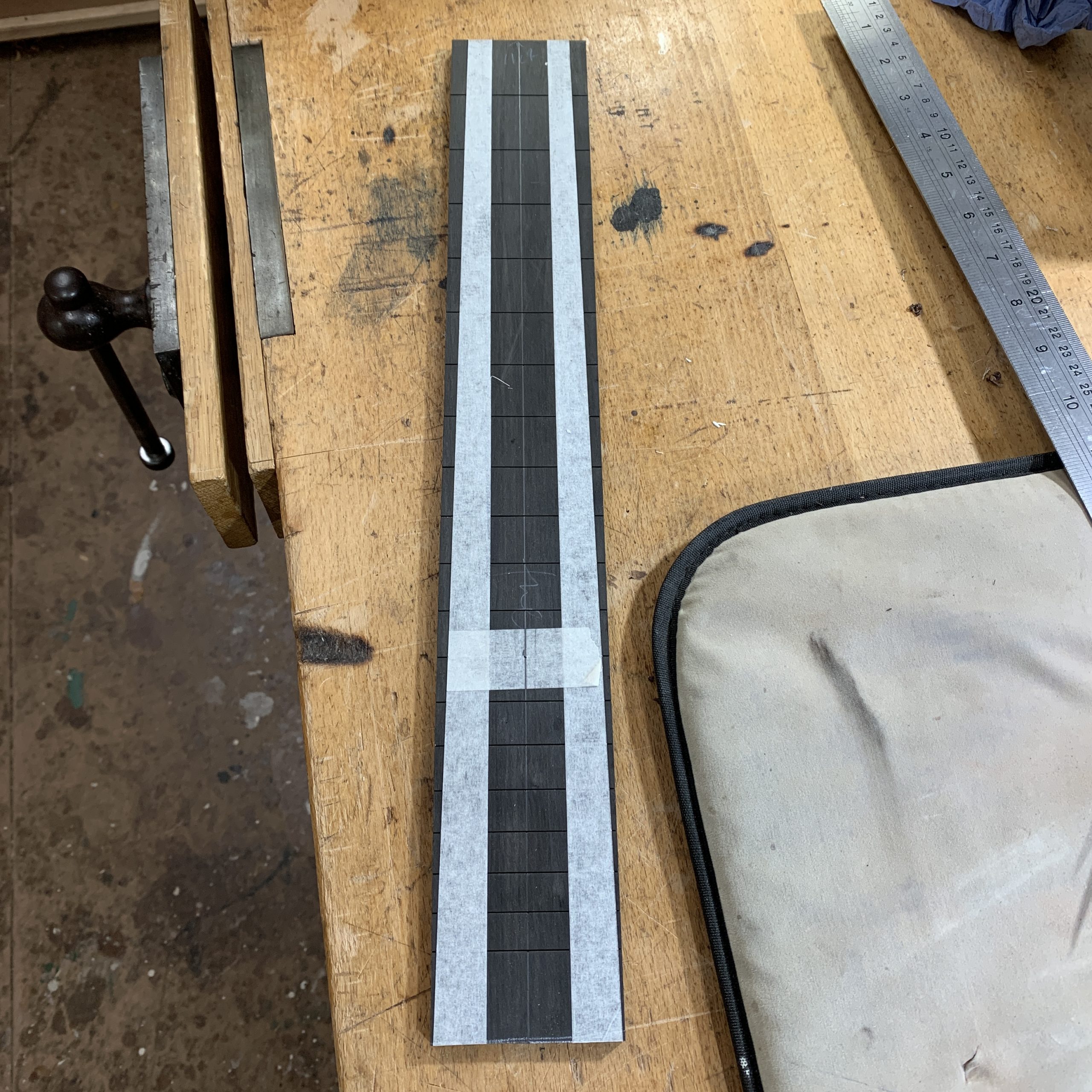
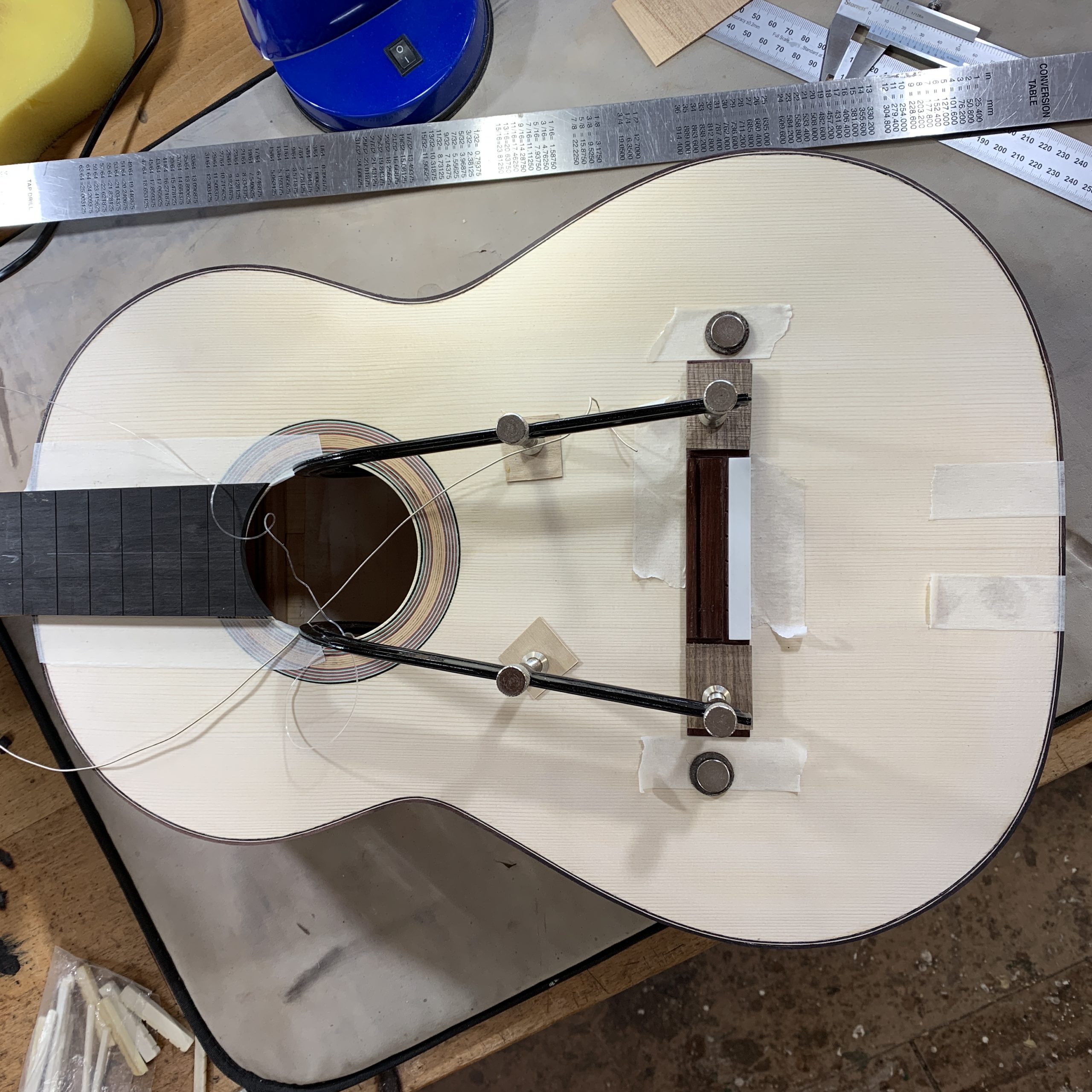

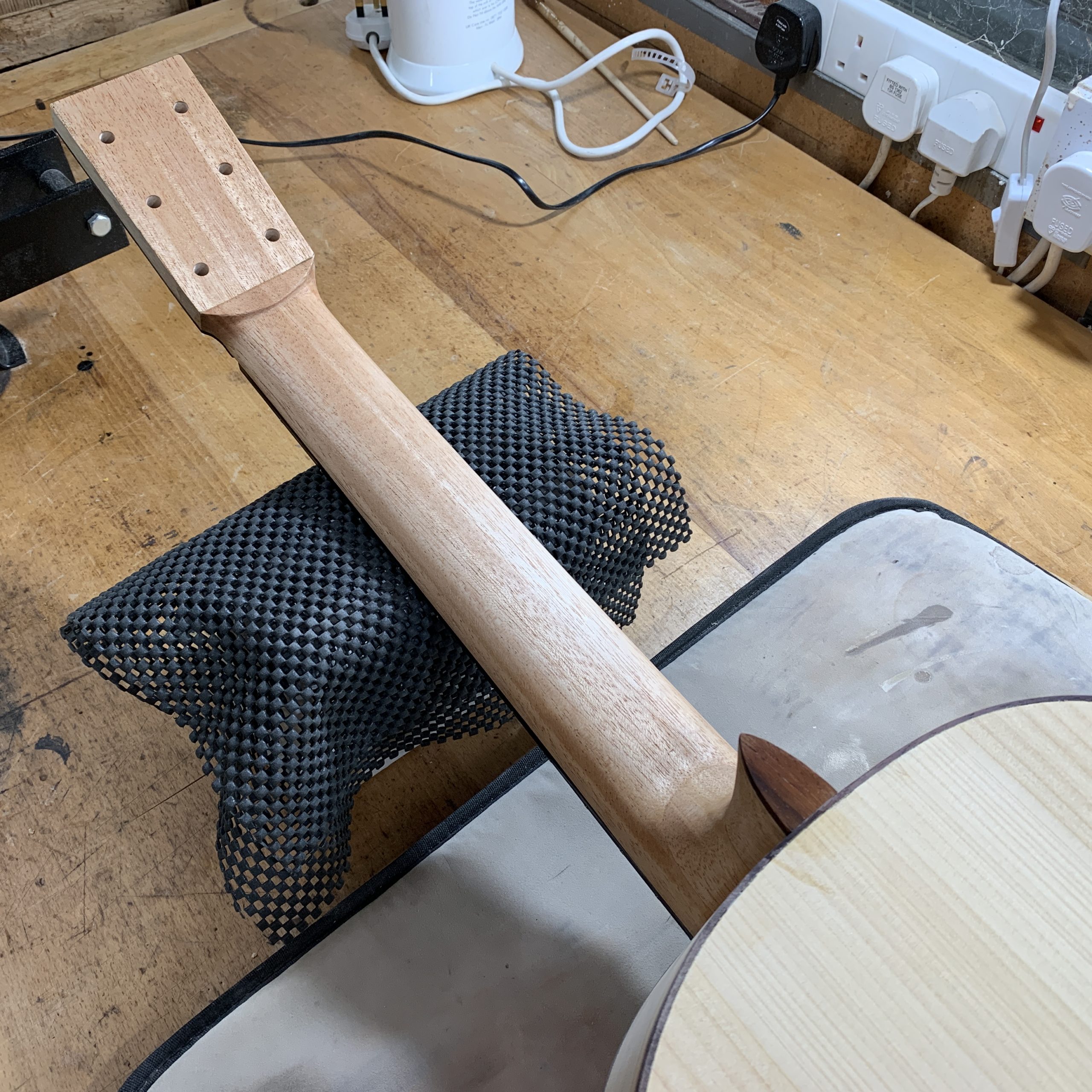
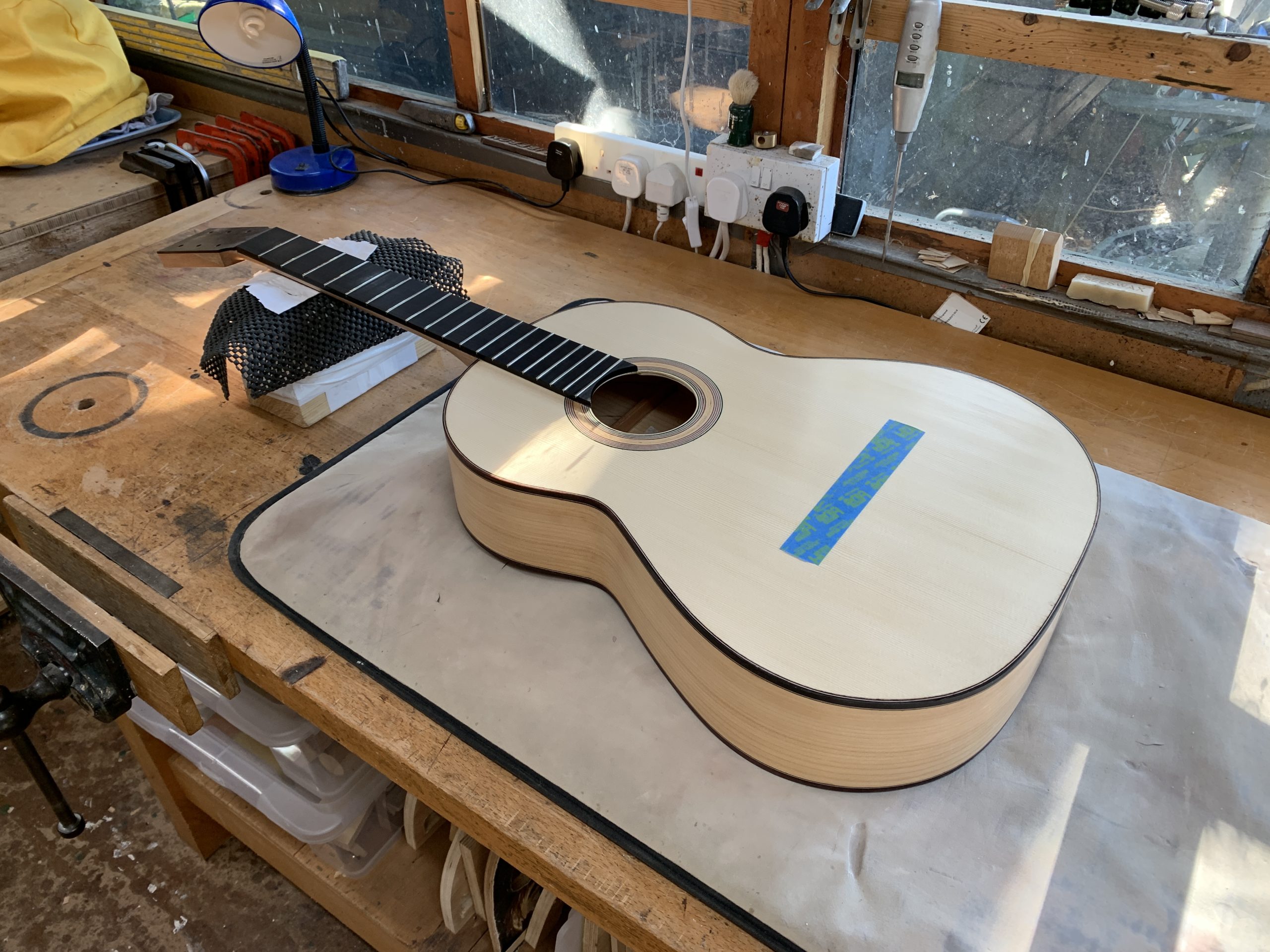

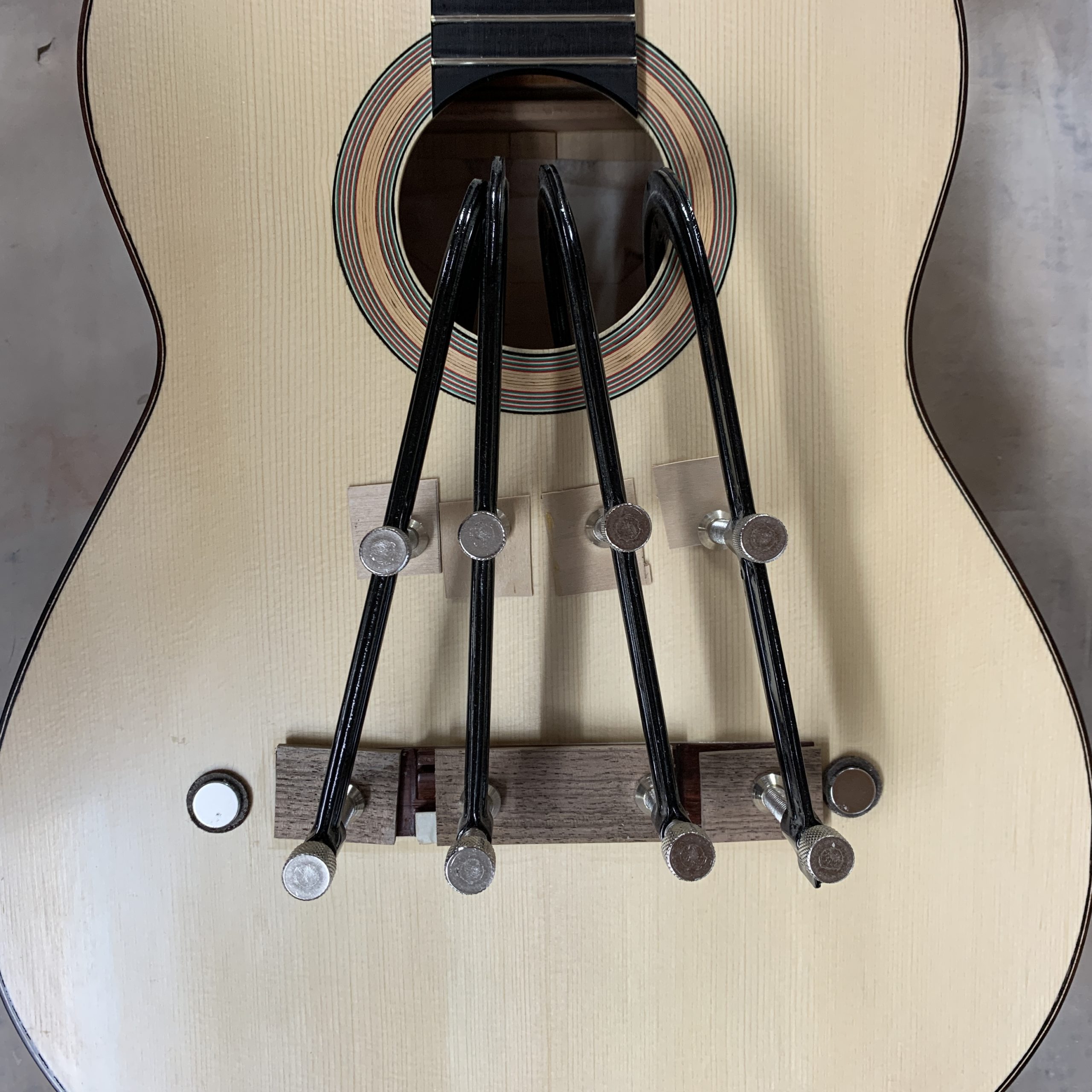
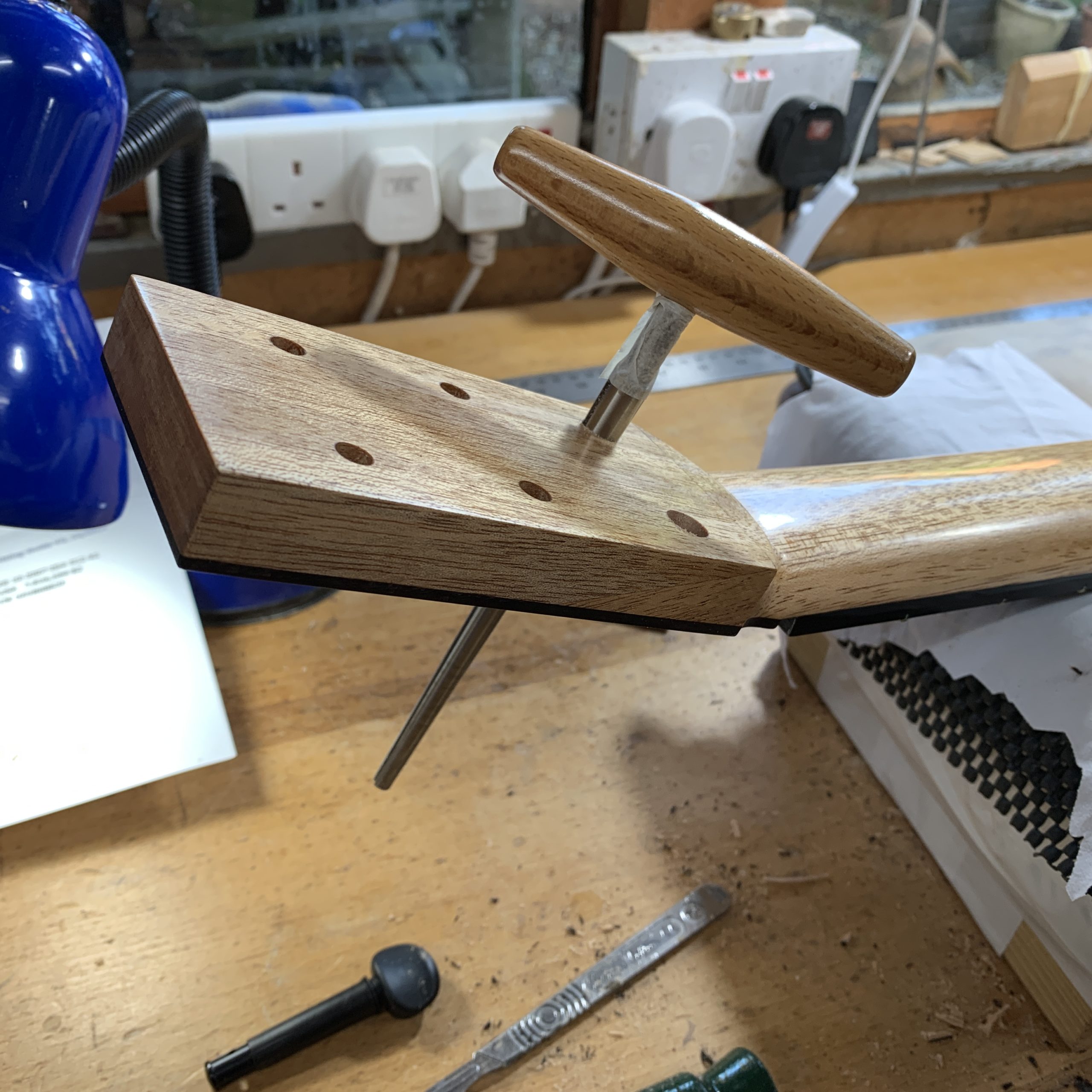
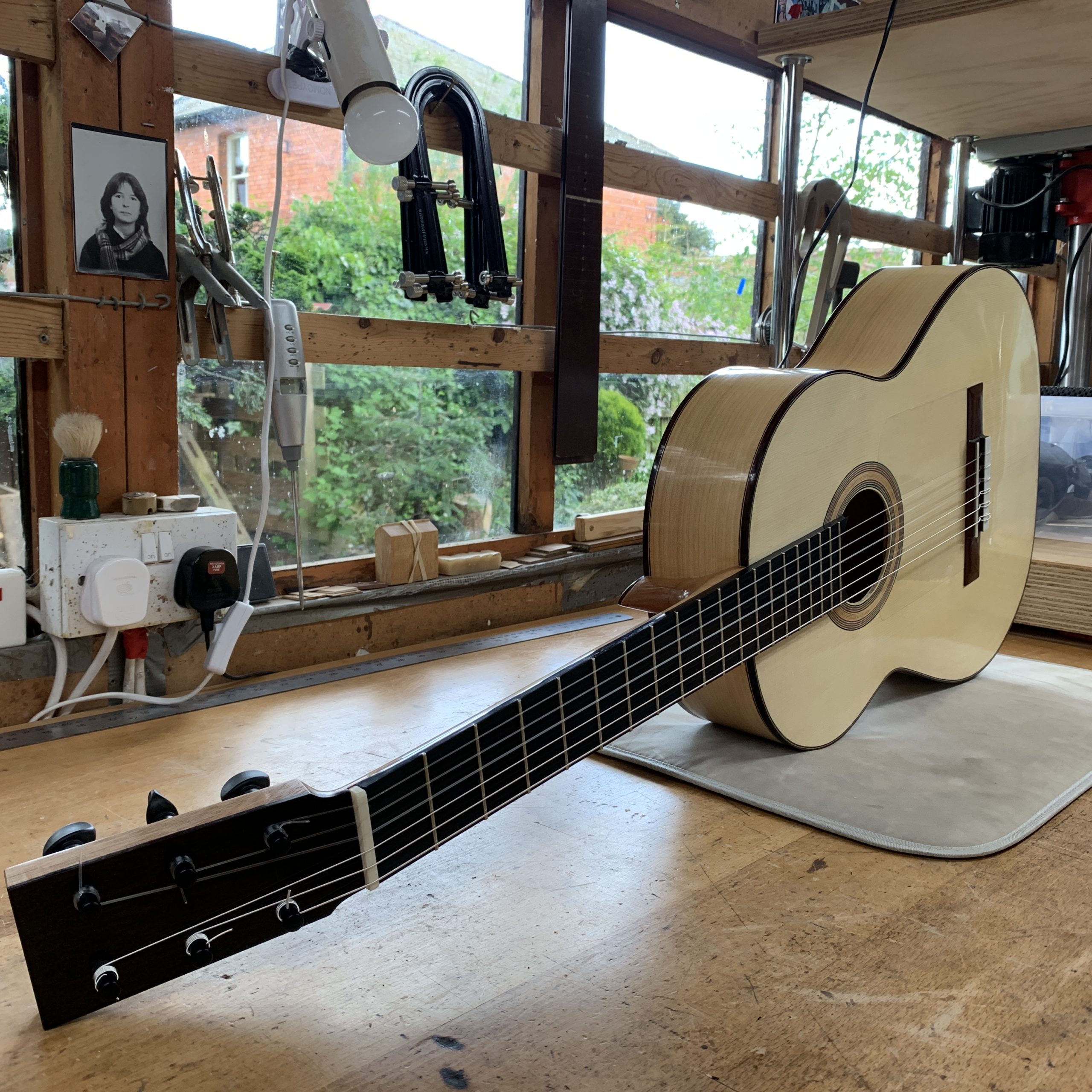
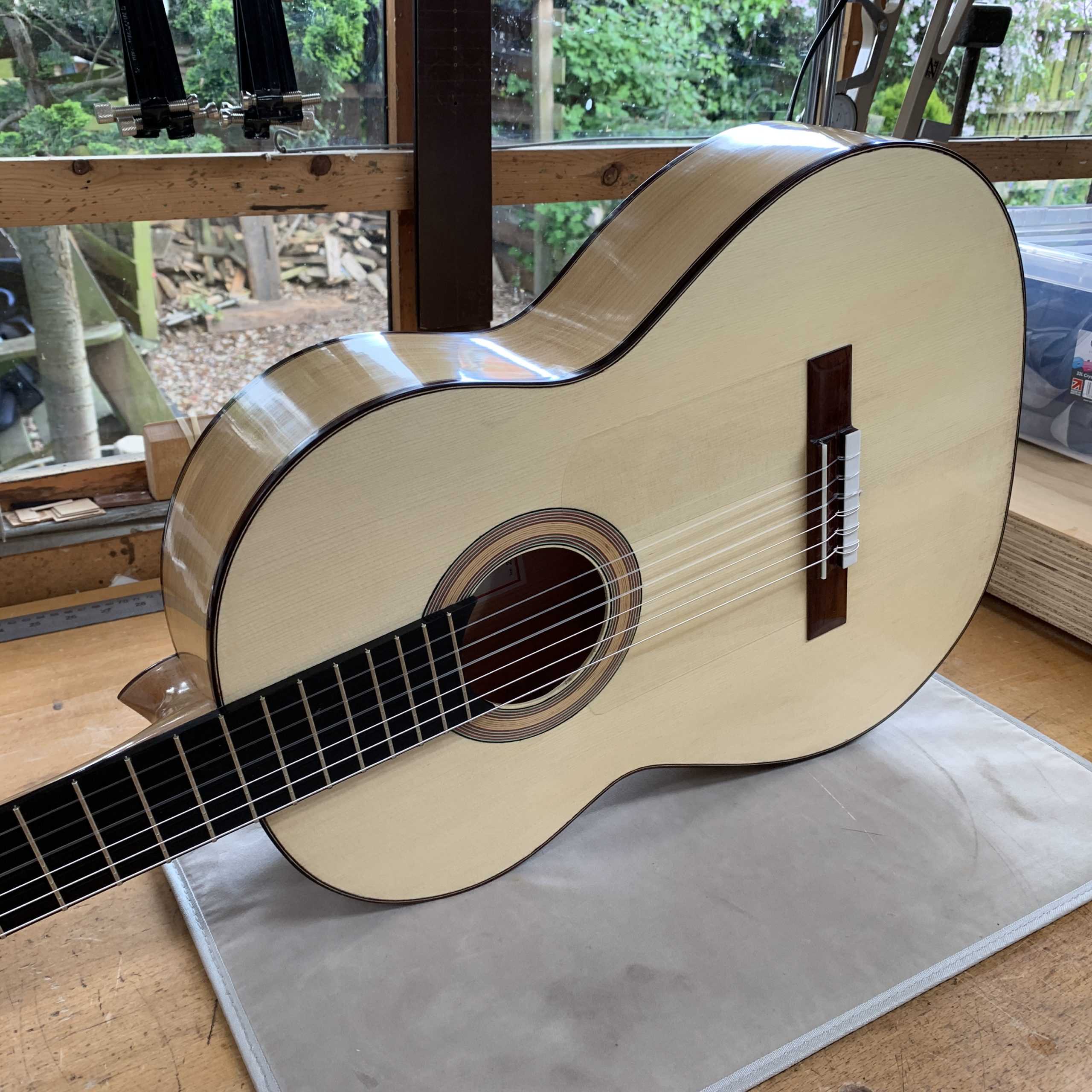
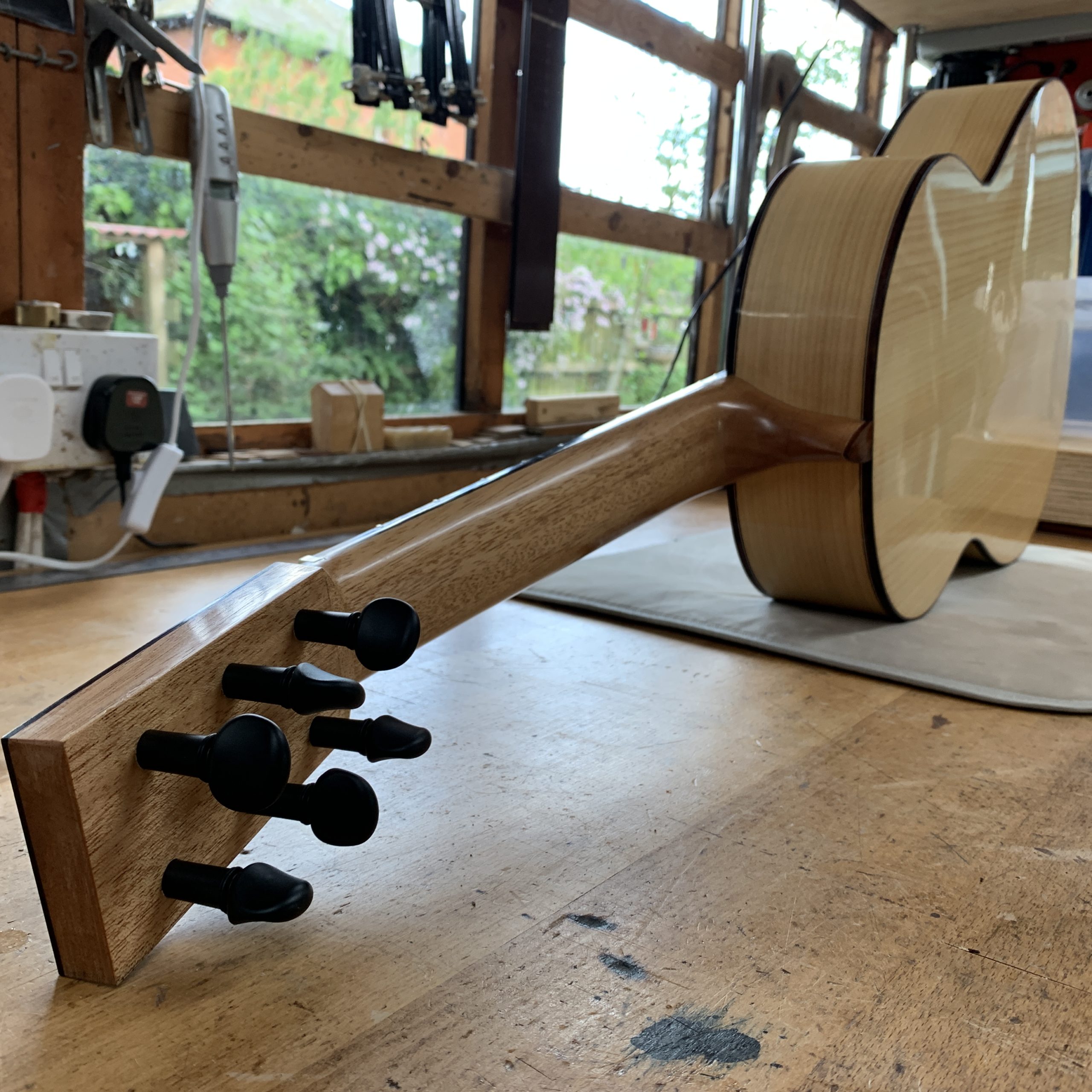


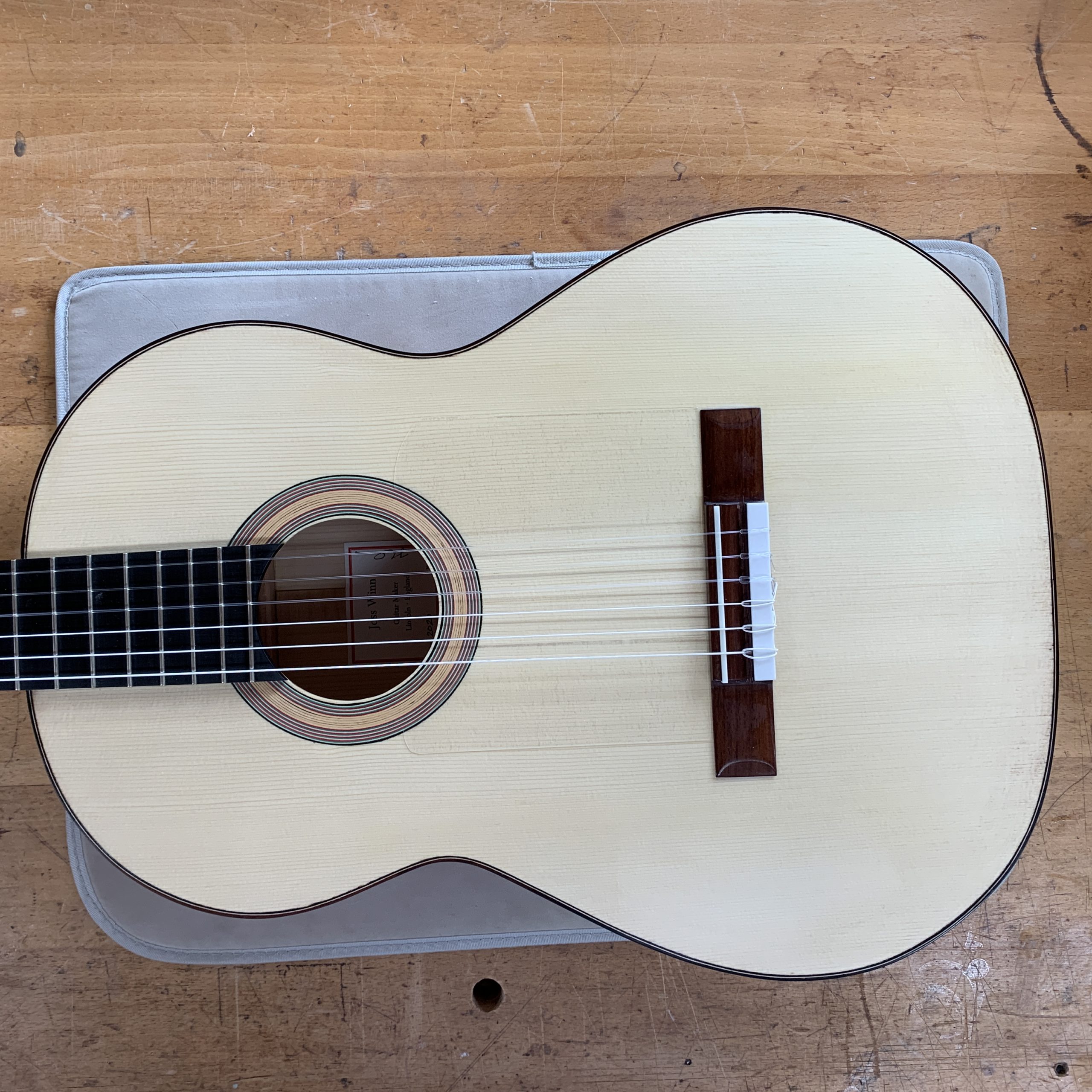
- I should say that I’m still trying to best understand how to record and interpret the tap tone data. The number 84.7Hz given here was produced by holding the guitar by the head and tapping it on and around the bridge, while using the iStroboSoft app on my iPhone. Later, I used my laptop and Adobe Audition to record and analyse tap tones, where the guitar is held in the playing position and tapped in a similar way. That produced a resonance of 82.76Hz. Recording it that way, gives more data on the tone of the soundboard and the back. Trevor Gore has published a lot on this, which is helpful.